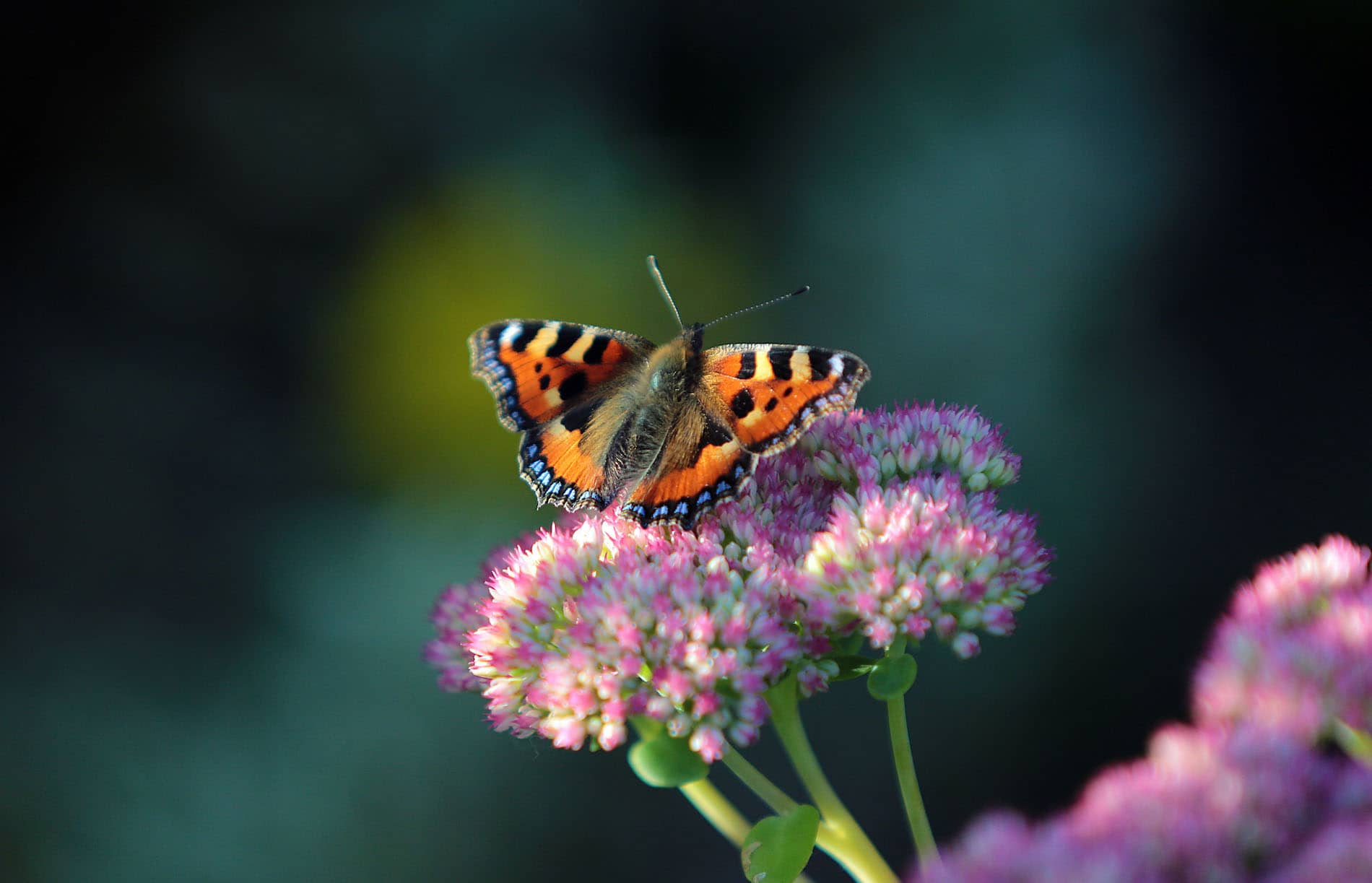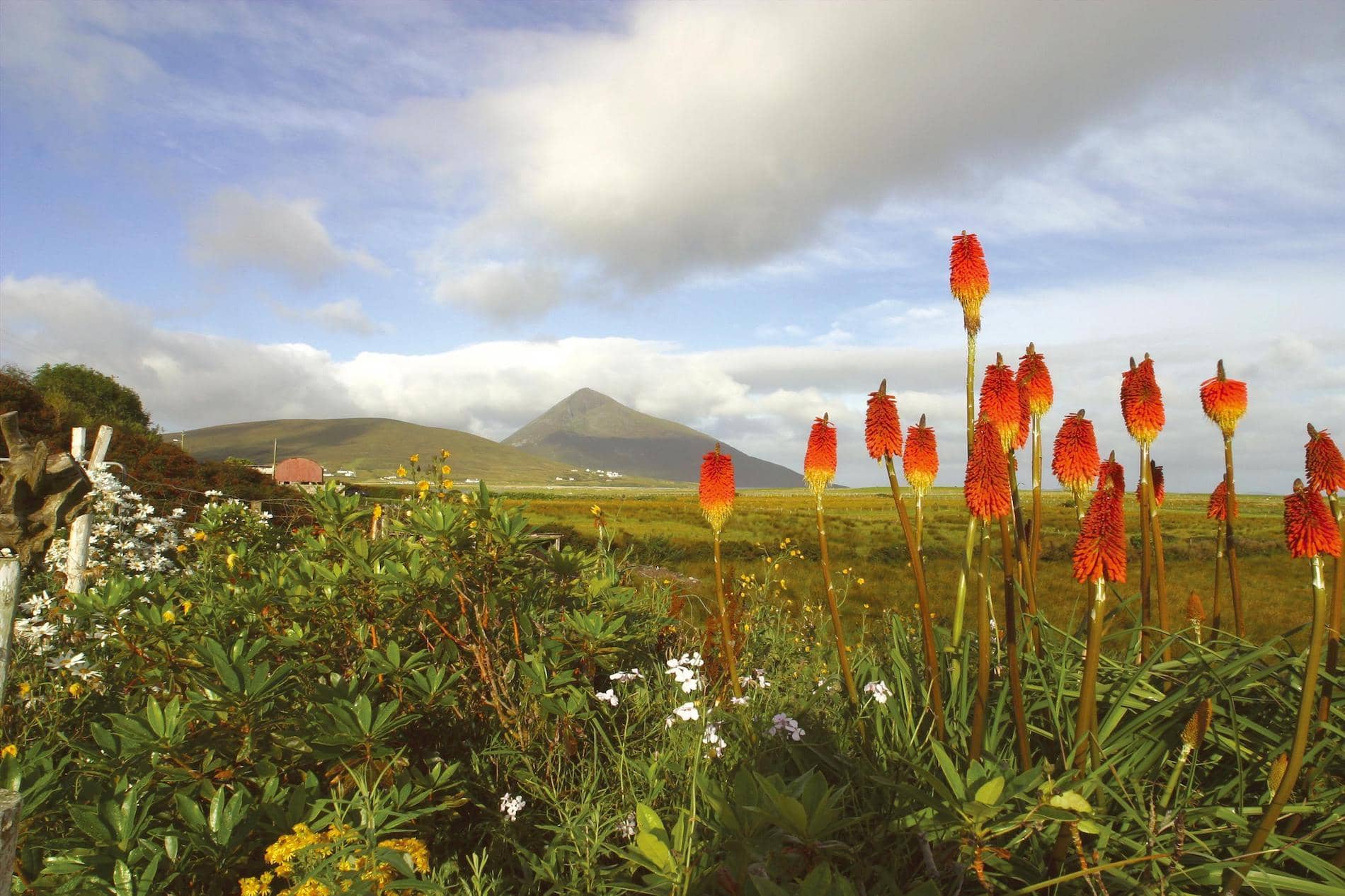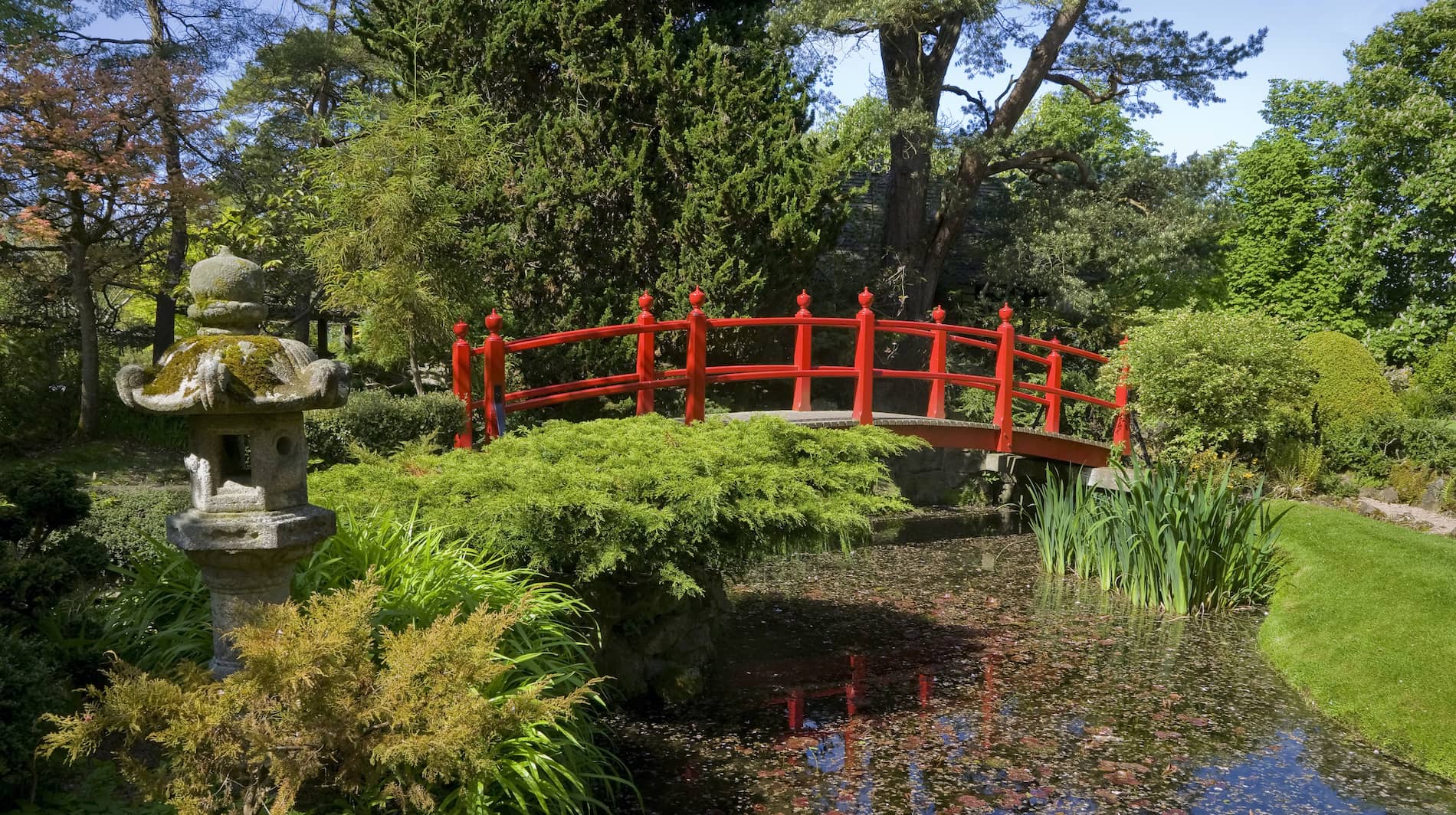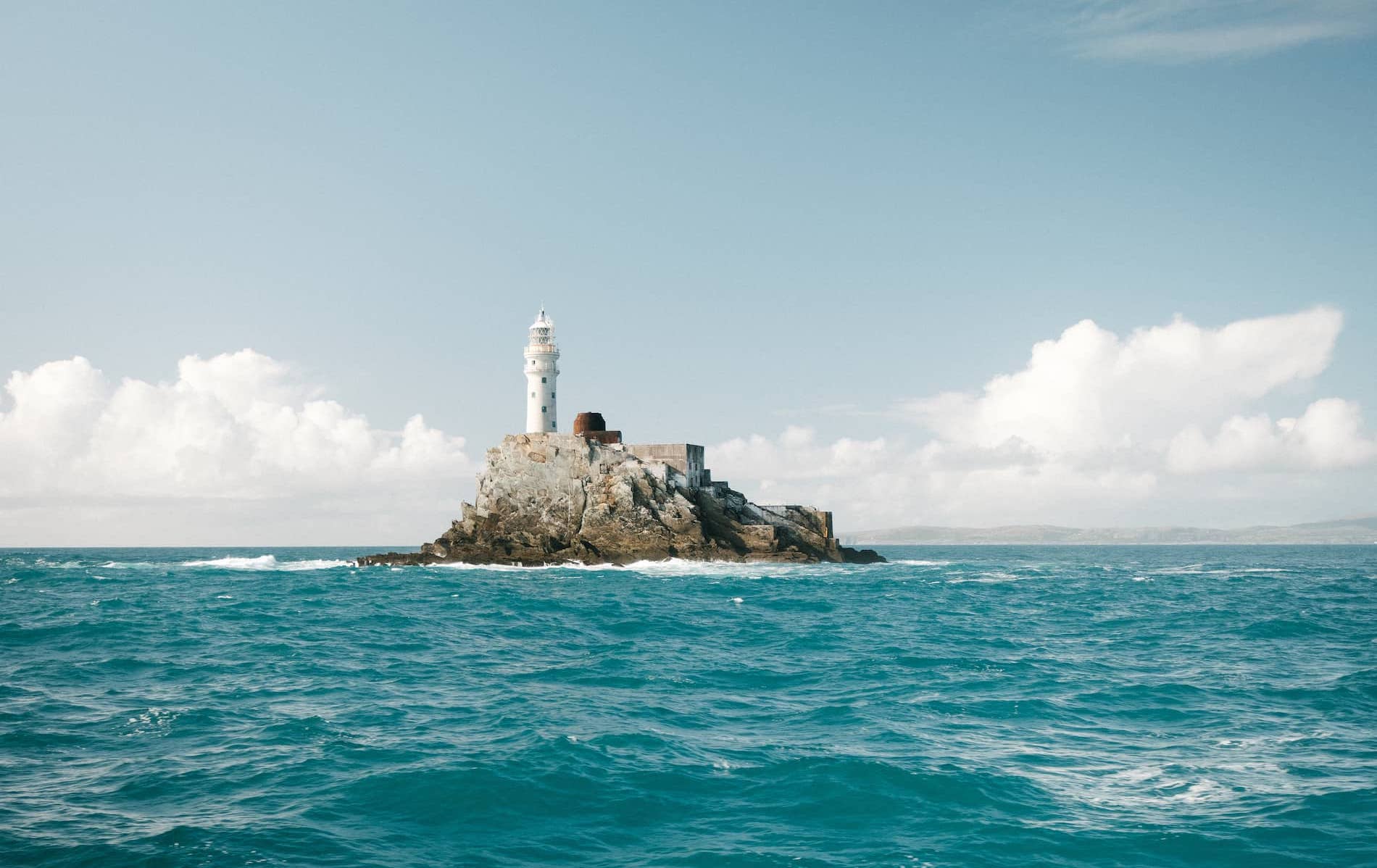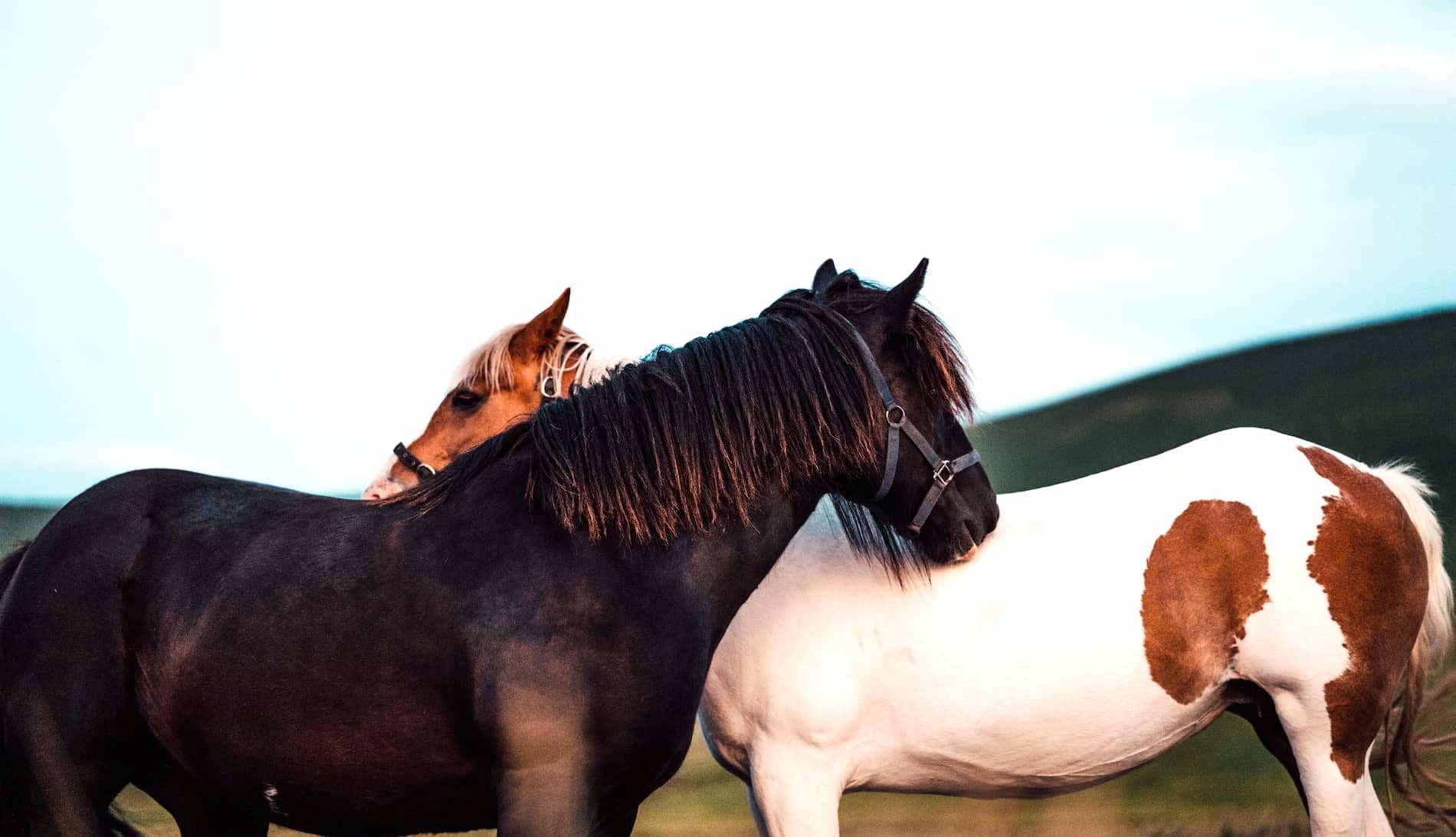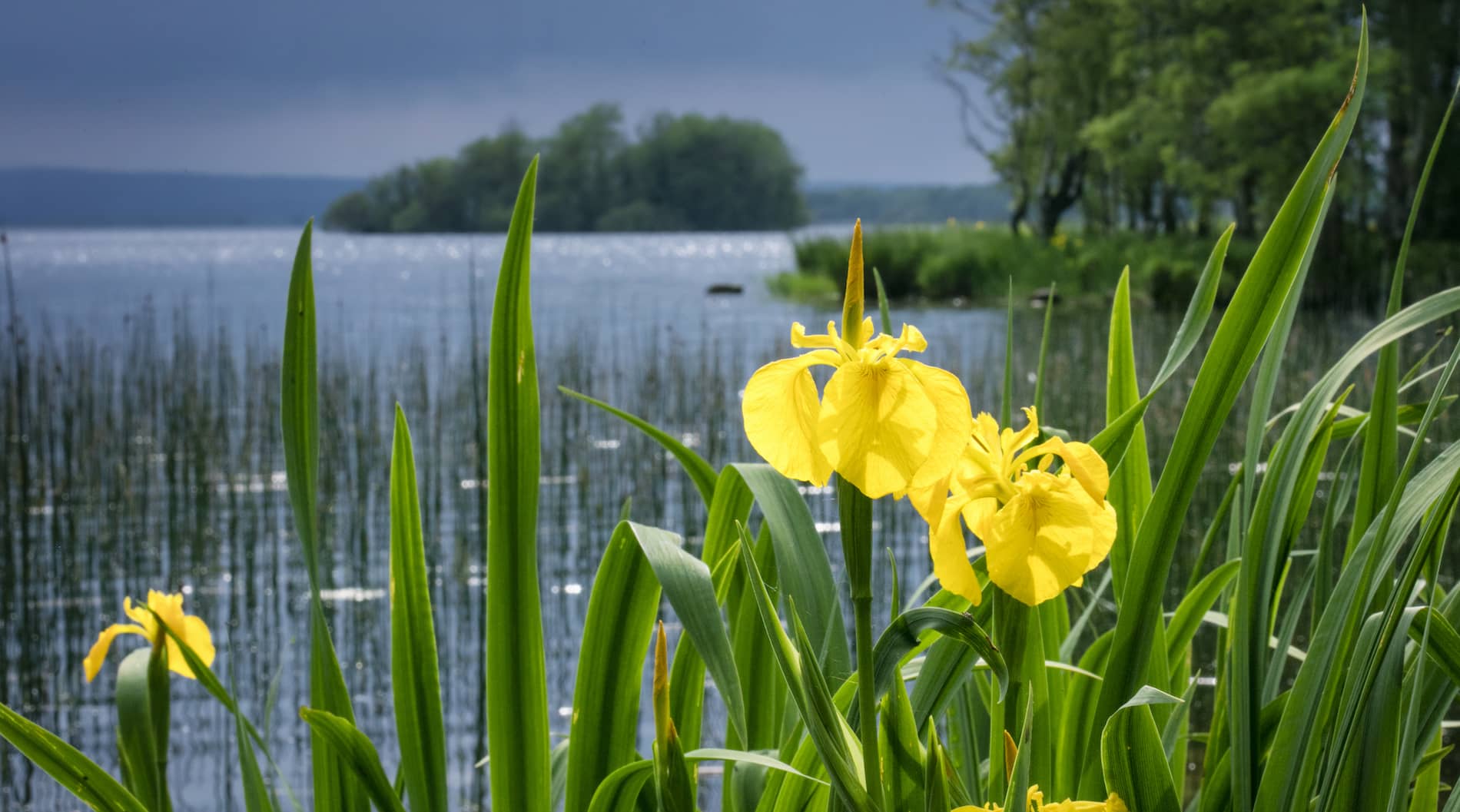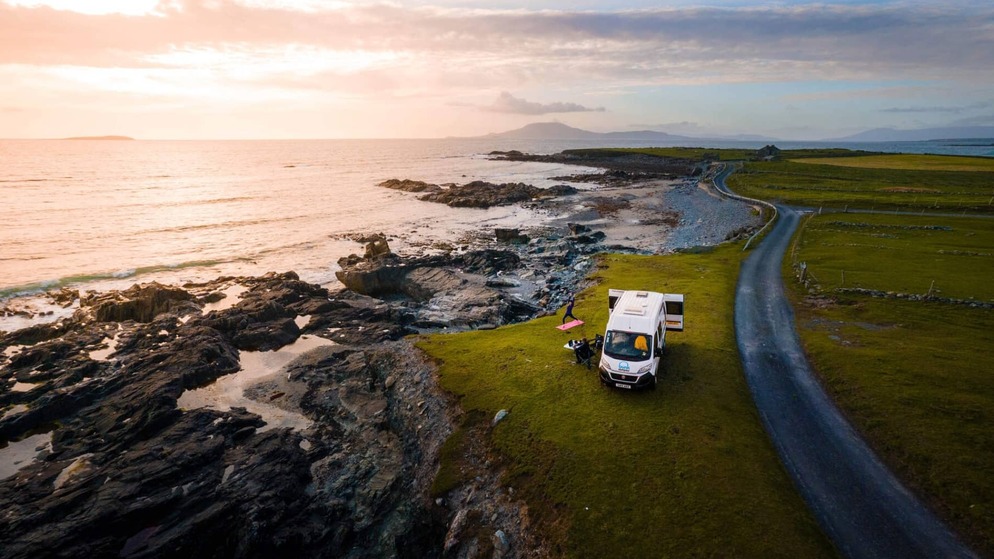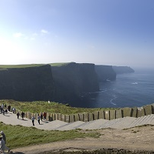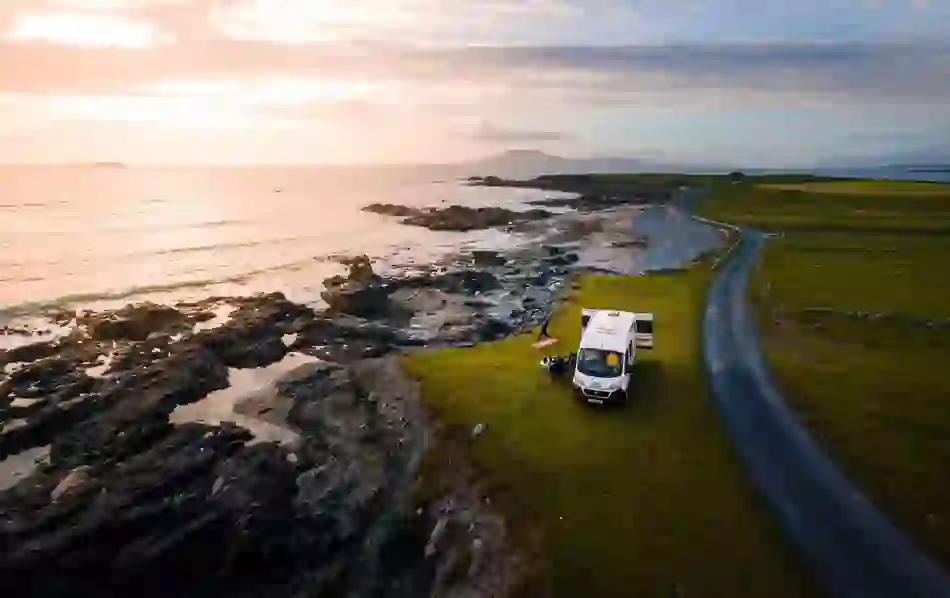
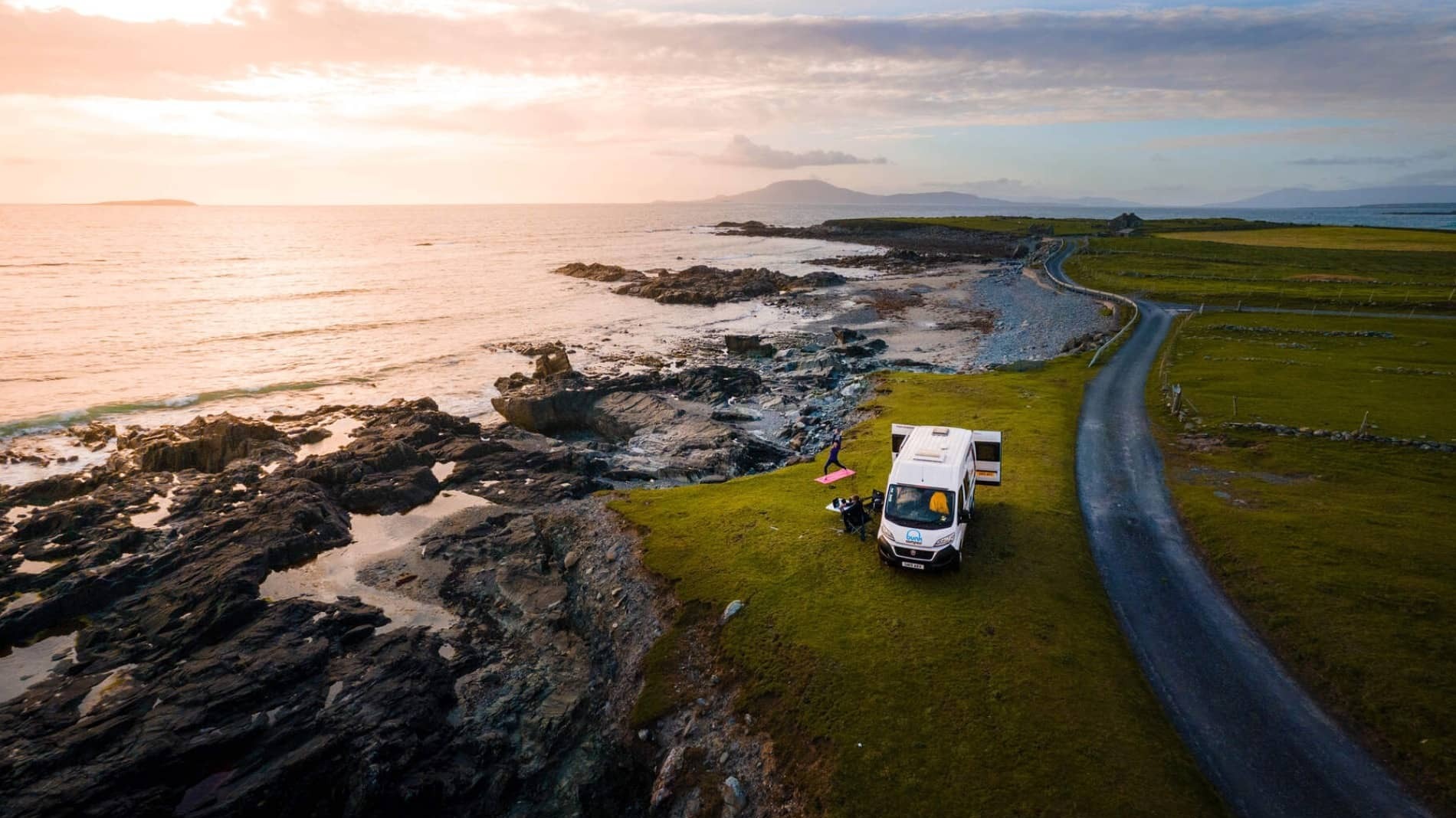
A 11-day tour of Ireland's southwest and southeast by caravan

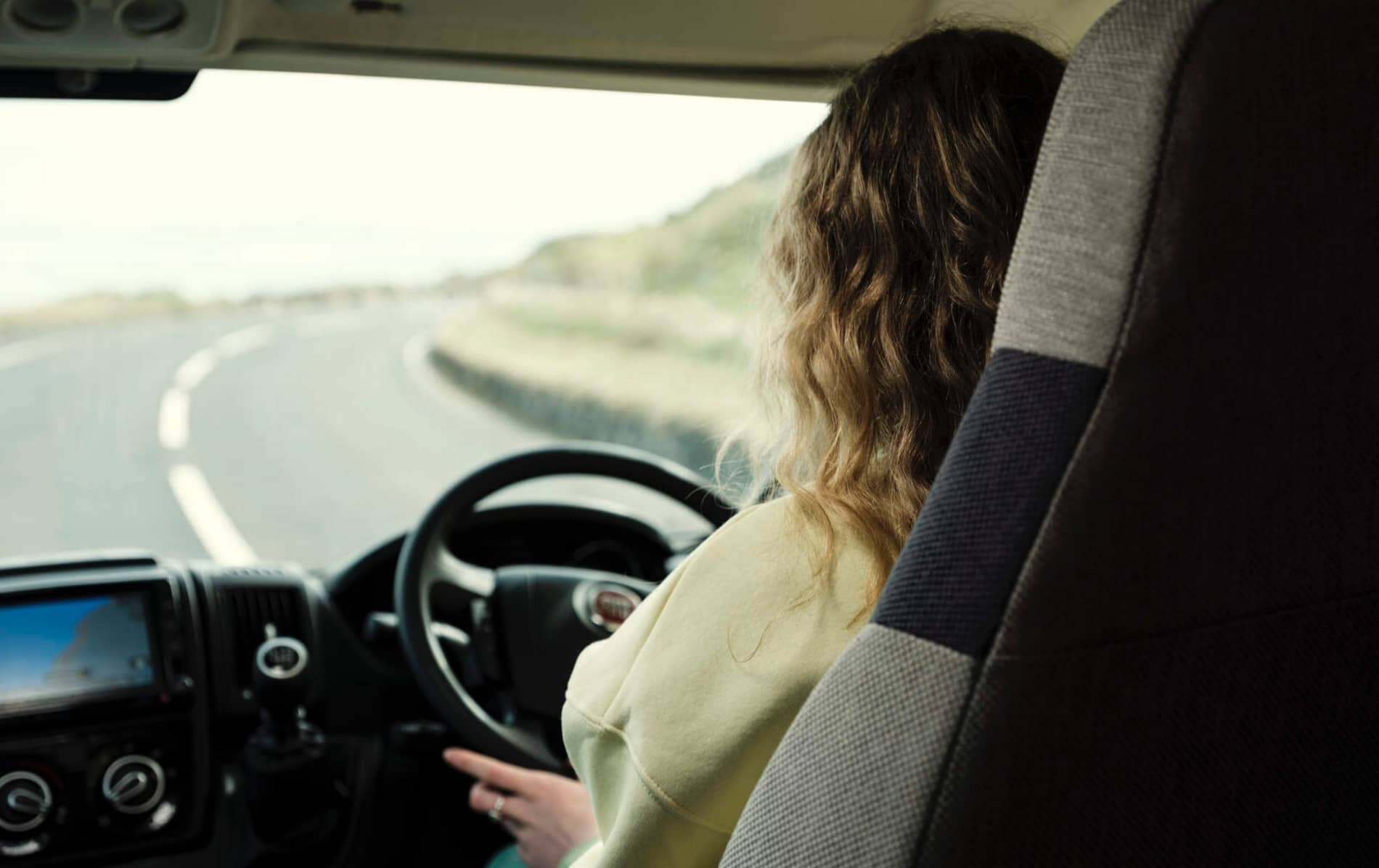

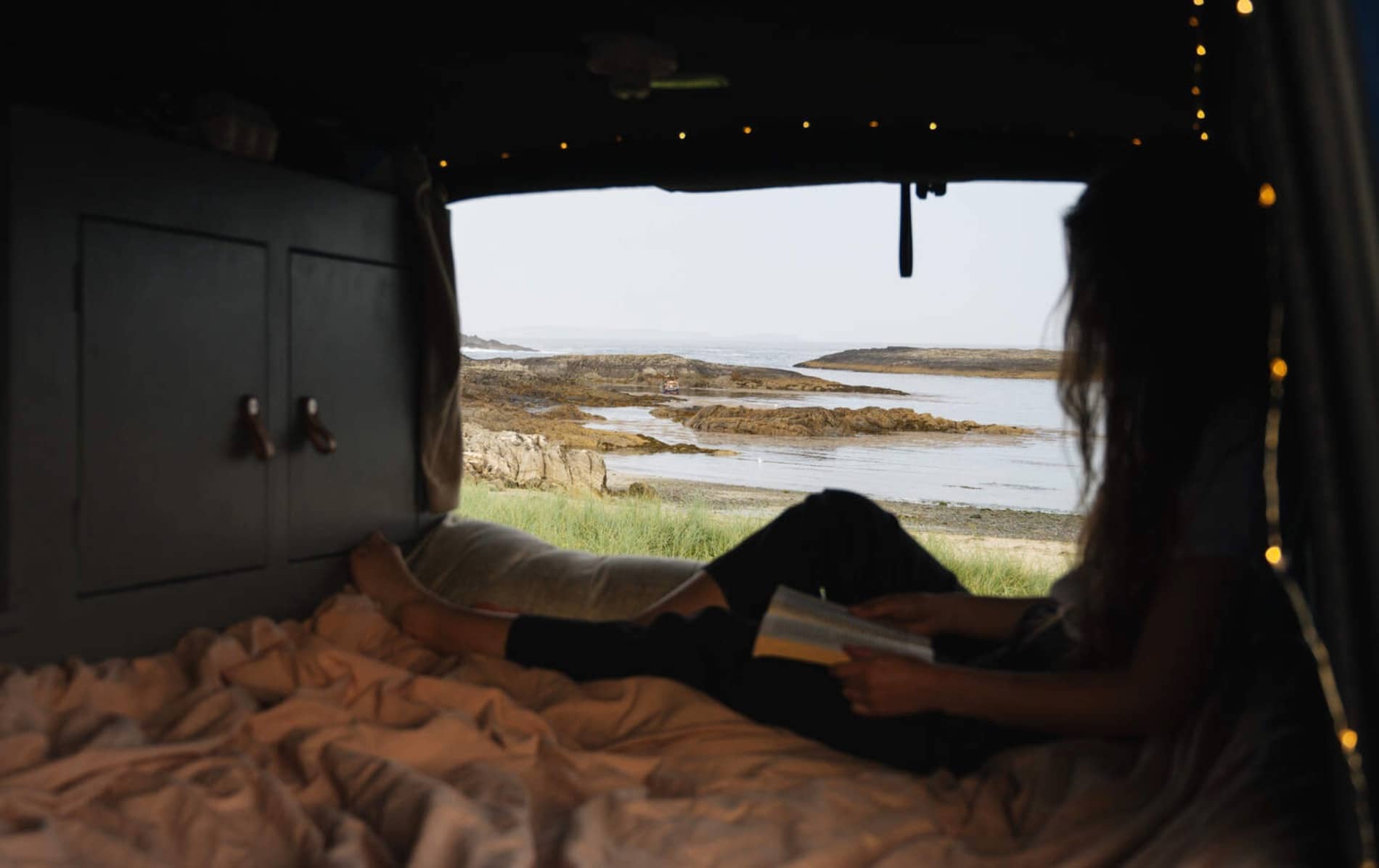

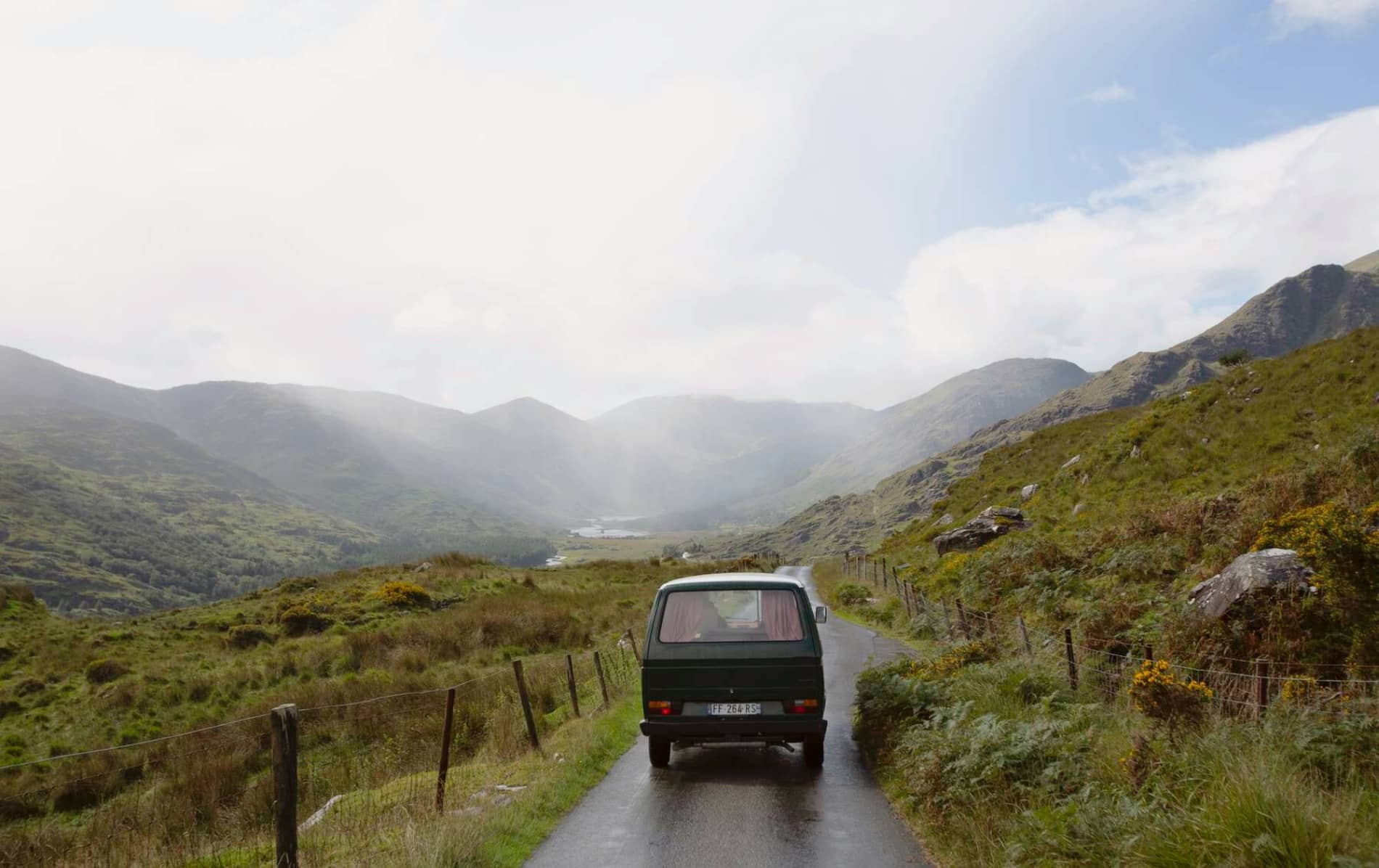
This 11-day caravan trip around Ireland takes you from awe inspiring landscapes on the Wild Atlantic Way to historic marvels in Ireland’s Ancient East. Starting in County Clare, you’ll head down the coast to County Cork before stopping at presidential hotspots, geological wonders and one of the oldest cities in Ireland!
Whether you have arrived in Ireland with your camper van or you plan to hire one here, you are guaranteed a trip to remember. Epic seascapes, colourful towns and villages and a trunk-load of craic (fun) awaits…

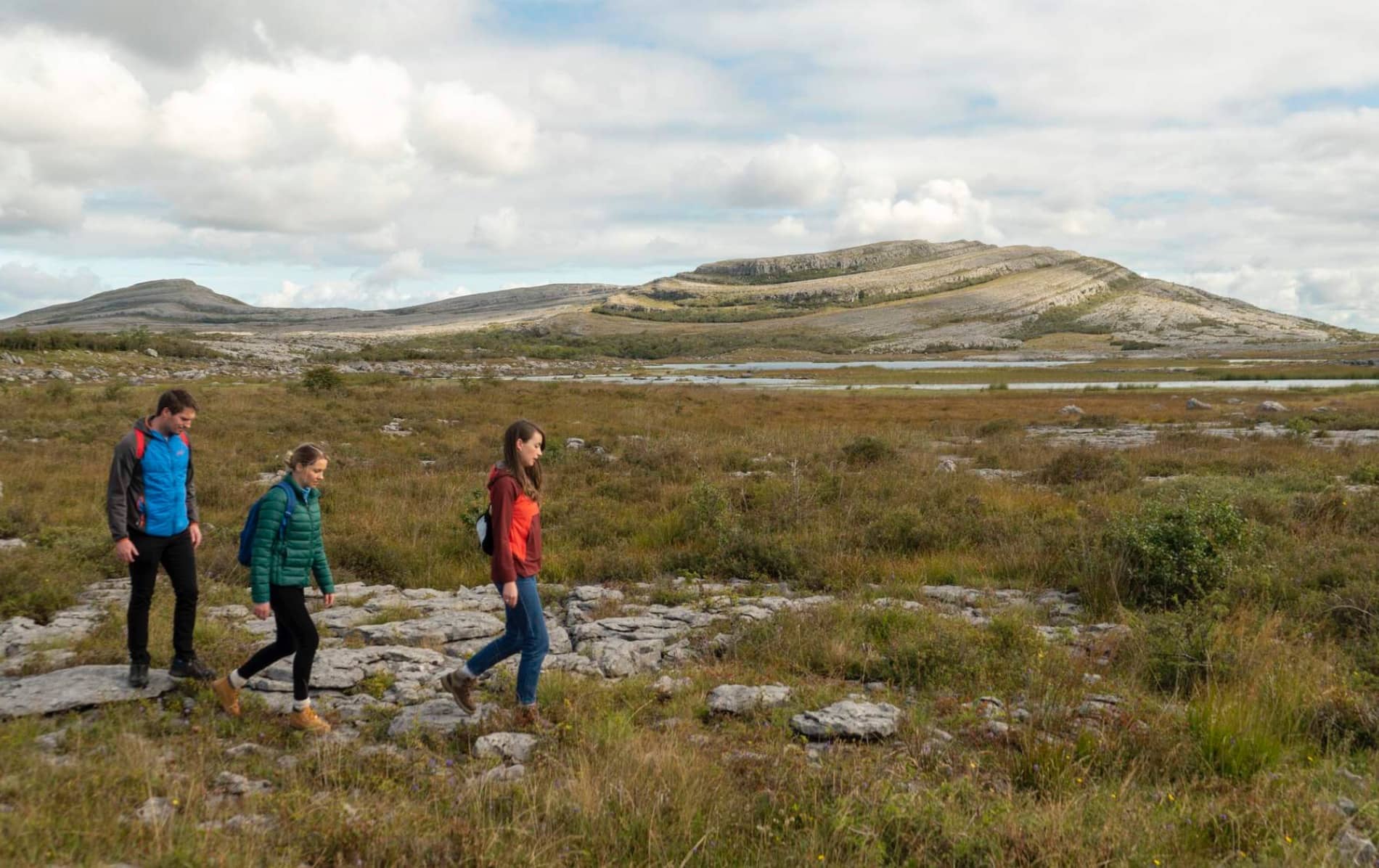
Day 1
Start your journey in the southwest and discover the magic of the Wild Atlantic Way…
Explore Day 1Lunar landscapes
The Burren

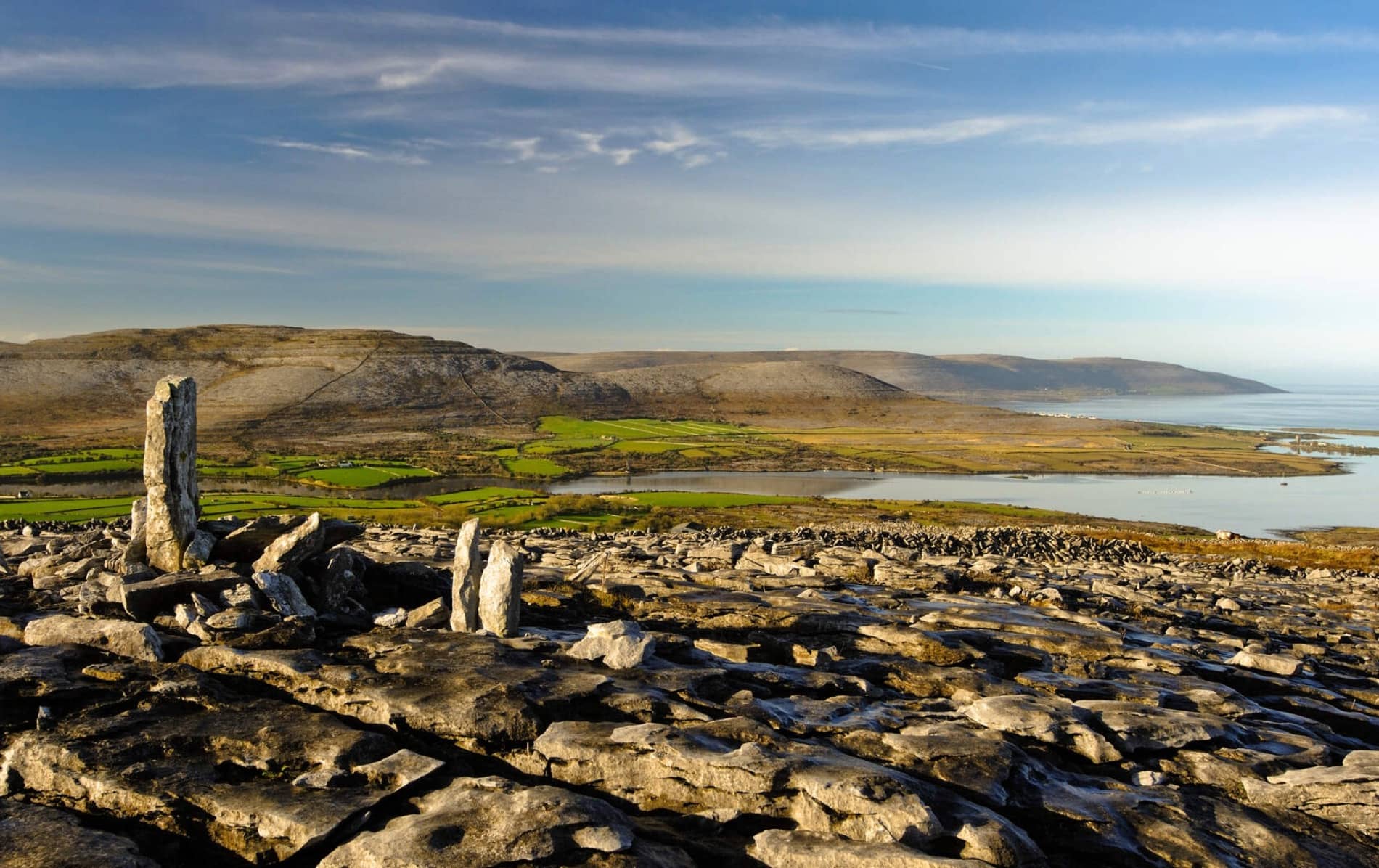
In County Clare you’ll discover one of Ireland's most astonishing and wildest landscapes of Ireland, the karst region of the Burren, a UNESCO Global Geopark. This landscape is made of limestone and was formed millions of years ago beneath tropical seas that are now long gone. During the day, you can enjoy some of the area's gorgeous walking trails, or just take in the scenery on beautiful Fanore Beach.
In the evenings, it’s all about traditional music in villages and towns such as Ballyvaughan and Lisdoonvarna and great food in gems like the Wild Honey Inn.
Looking for a scenic route? Take the R460 which goes right by the Burren National Park and make your way to Doolin through some of County Clare’s most beautiful countryside. Another way to get to Doolin is on the N67, which bypasses the Burren, but does offer fantastic coastal views of the Wild Atlantic Way along the way.
8 km
These cliffs can’t be missed…
Cliffs of Moher, County Clare

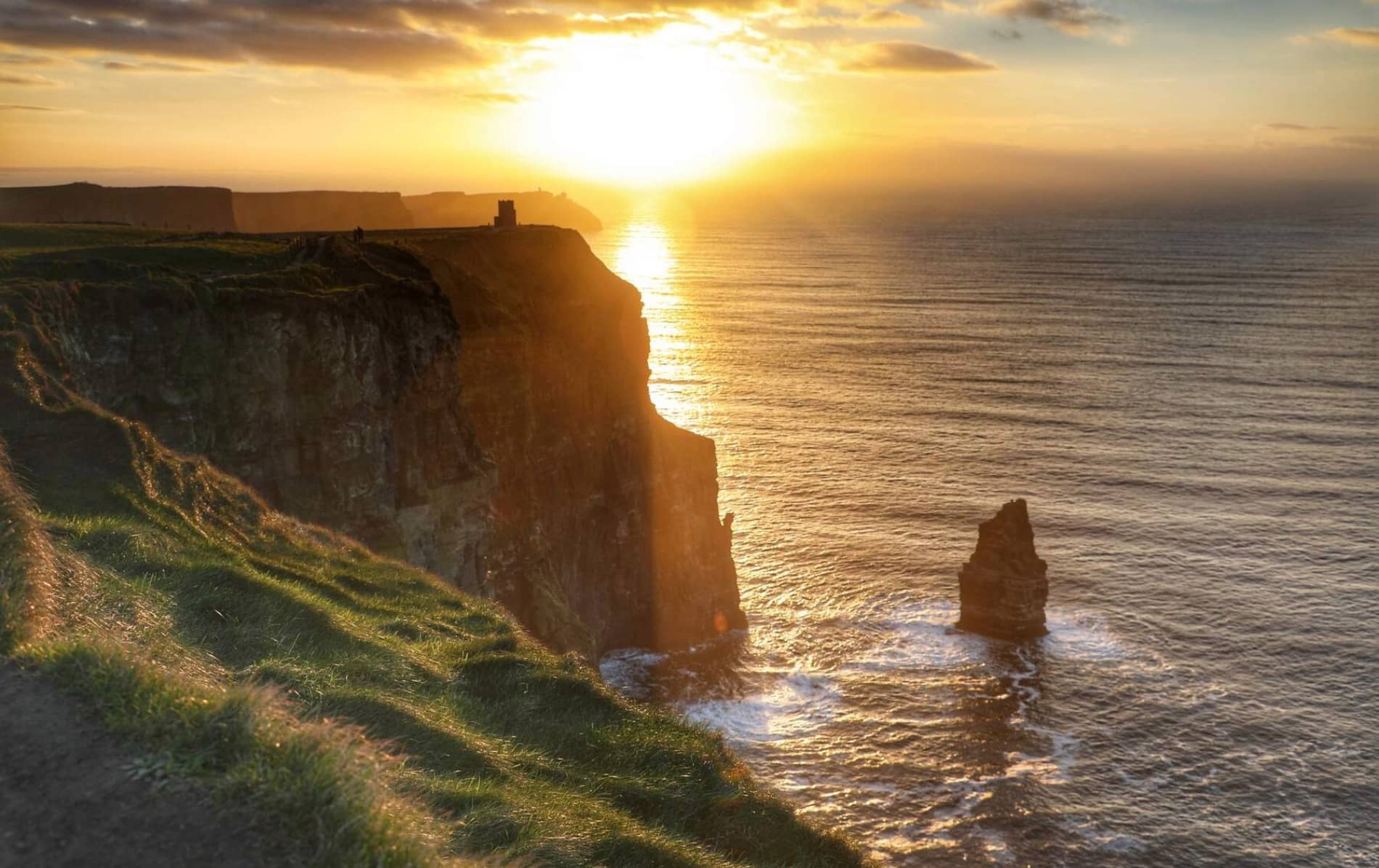
A trip to County Clare isn’t complete without stopping by the magnificent Cliffs of Moher. You’re welcome to bring your camper van and park in the car park on site, or if you enjoy long walks, the Cliffs of Moher Coastal Walk from Doolin takes about two hours to complete. It’s an amazing way to connect with nature and really get up close to the gorgeous cliffs. If you’d like to know more about the cliffs, book a 45-minute guided tour at the visitor centre, where your guide will talk you through the sublime biodiversity, history and sustainability of the area.
You can rest up for the night at Nagle’s or O’Connor’s Riverside Camping and Caravan Park. They’re within a five-minute drive of each other, and both offer stunning views of the Atlantic Ocean.
8 km


Take to the sea
Dún Aonghasa, Inis Mór, Aran Islands, County Galway


Using the colourful village of Doolin as your base for the day, you can take your time and choose from a host of adventures. If you’re ready to test out your sea legs, take a ferry (it runs from March to October) from Doolin to the Aran Islands – three islands in Galway Bay.
Inis Oírr, Inis Meáin and Inis Mór have maintained the culture and heritage of traditional Irish life, including Aran sweaters, Irish-speaking and dry stone walls that weave through the landscape. If you're staying longer, you can visit all three or pick one and enjoy a lovely day out. Inis Oírr is the nearest to Doolin and boasts gorgeous beaches, but the prehistoric ringfort of Dún Aonghasa on Inis Mór is a particularly epic sight.
Back on the mainland, Doolin is sure to welcome you with a party as it’s an Irish folk music hub, so join in the fun at McDermott’s, famous for its joyous musical sessions.
78 km

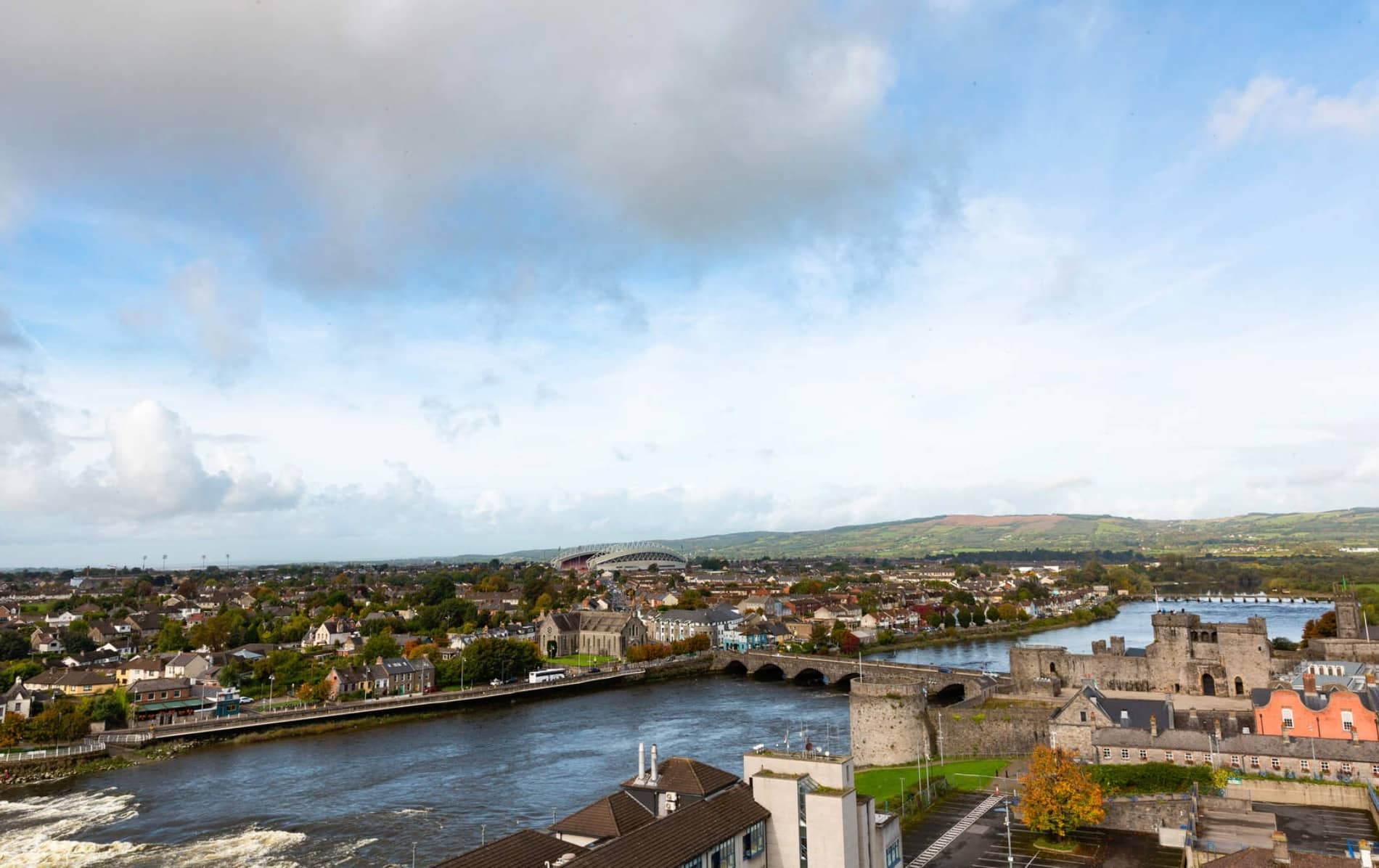
Day 3
It’s time for a city break and long uninterrupted stretches along the rugged coastline on your journey south to County Kerry
Explore Day 3Quirky Limerick city
Hunt Museum, Limerick

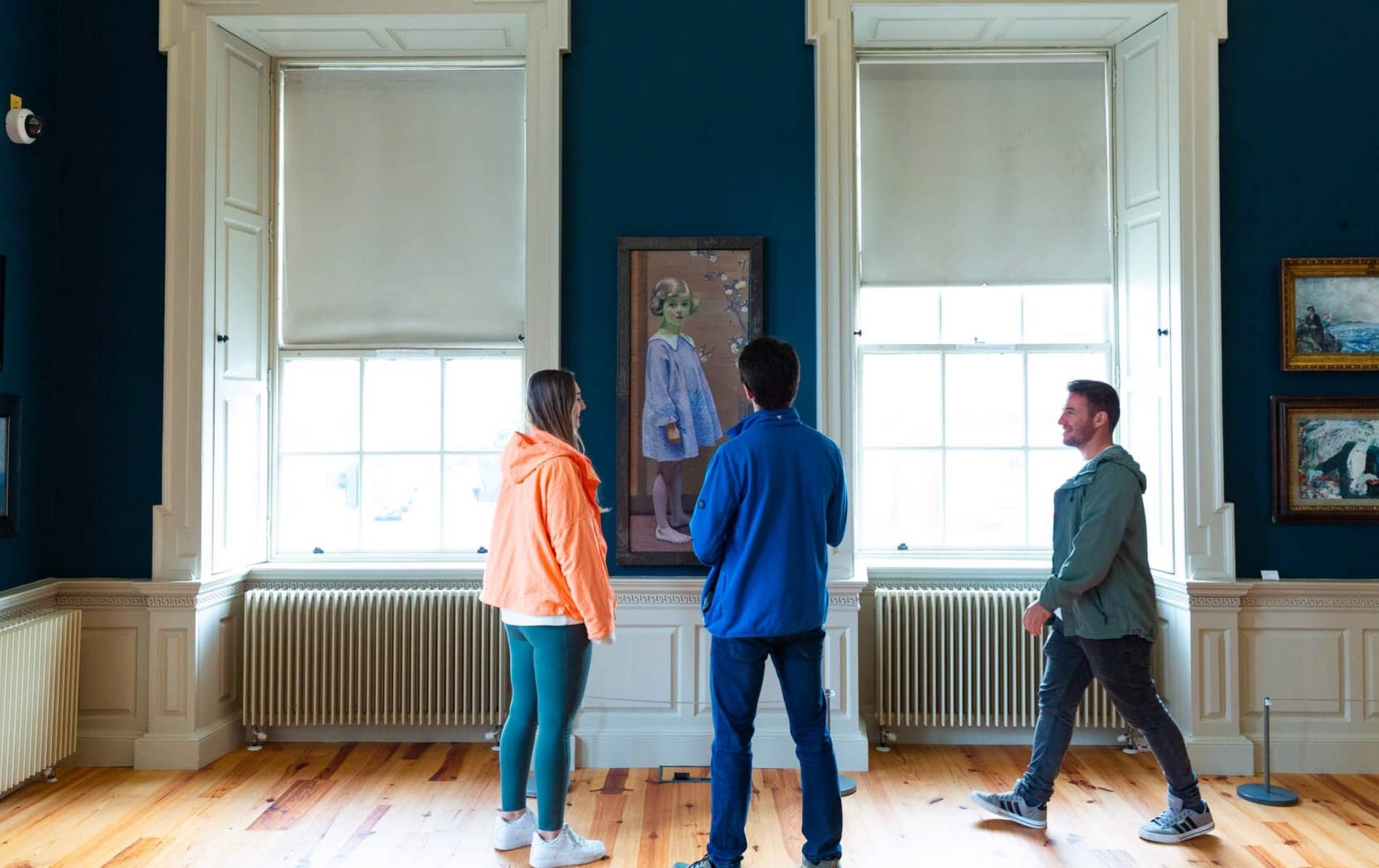
Just over an hour's drive from Doolin is a city quite unlike any other – Limerick. While it was once the backdrop for Frank McCourt's award-winning but bleak memoir, Angela’s Ashes, Limerick's is a quirky, arty city filled with museums and galleries showcasing local and international showstoppers. It's also a rugby hub, on match days, the city streets are also filled with passionate rugby fans as Thomond Park is home to Munster Rugby, an internationally renowned club.
Sitting at the mouth of Ireland’s longest river, the River Shannon, Limerick was settled long ago. From King John’s Castle, which has been standing tall in the city for over 1,000 years to the 18th century Georgian streets, this is a city with stories to tell.
Explore amazing art galleries such as the Hunt Museum which houses masterpieces from Picasso and Renoir among others. For lunch, head to the famous Milk Market (which runs from Friday to Sunday) and take your pick of local food and crafts.
If you have more time, see why this city inspires such sporting fervour at the International Rugby Experience which shows off Limerick’s proud rugby heritage.
108 km
Onwards to “The Kingdom”
Blennerville Windmill, County Kerry

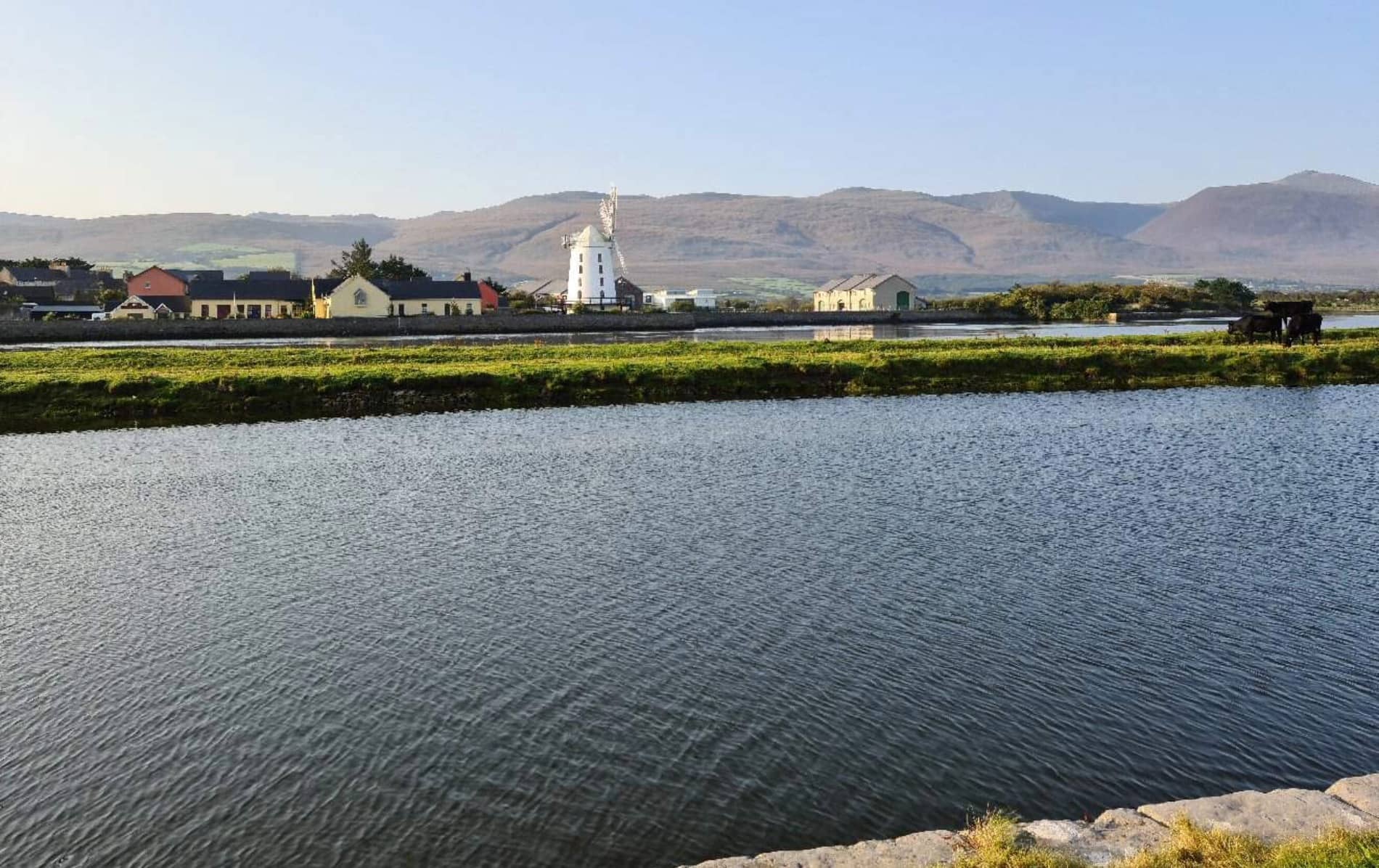
While the rest of the day will be dedicated to heading further south towards Dingle in County Kerry, that doesn’t mean you can’t enjoy the journey…
From Limerick city, head first on to the M20 before following the N21 to some of county’s loveliest towns and villages. It’s up to you if you want to stop or keep driving on, but we’d recommend making a pit stop in Adare with its picture-perfect thatched cottages that look like something straight off a postcard.
If you continue towards Dingle on the N21, you’ll find the unforgettable town of Tralee just over the border in County Kerry. It’s everything you’d expect a traditional country town to be with a National Folk Theatre and festivals like the Rose of Tralee held in August.
But it’s also so much more. Visit the 18th century Blennerville Windmill, or if you’d like to stretch your legs after the long drive, take a walk along the canal bank and Cockleshell beach, where you can soak up the unbeatable sea views.
If you have more time and you’re feeling peckish, head to Quinlan’s where the catch of the day comes fresh from the nearby Atlantic.
48 km
Dingle delights
Dingle Peninsula, County Kerry

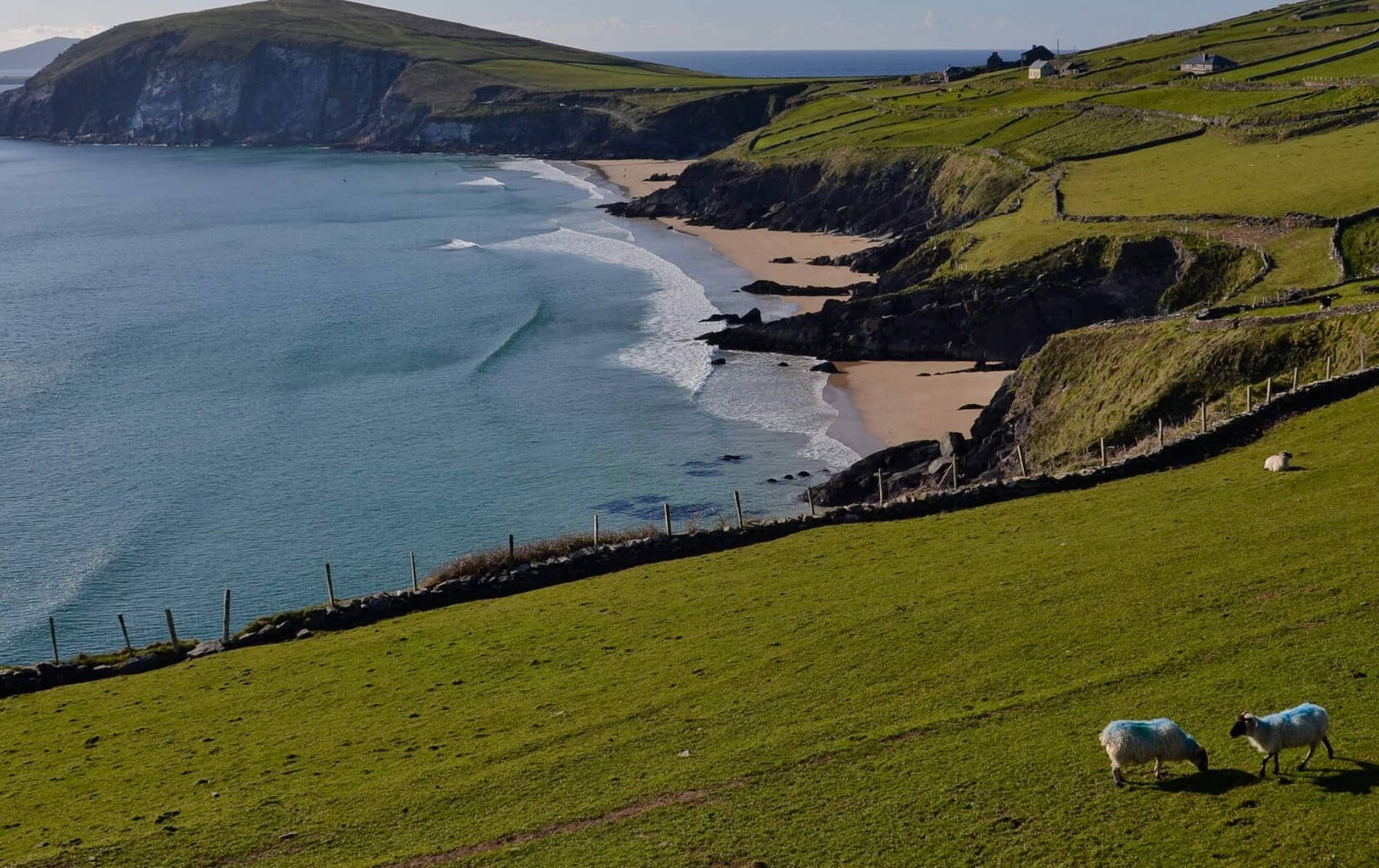
Your final stop of the day is the bustling town of Dingle. To get here, you'll need to take the N86, as the Conor Pass is closed to vehicles over 2 tonnes. The Dingle Peninsula is an Irish-speaking area, known as a Gaeltacht, like the Aran Islands. As soon as you arrive, you’ll get a sense of the unique culture as you mingle with local musicians, poets and storytellers.
You could spend your whole holiday in Dingle and still not run out of things to do. There are plenty of pubs and shops to enjoy, from half-pub, half-hardware hotspots like Foxy John's to the Dingle Bookshop and Tripster where you can find retro-style prints.
Food-wise, you’re in for a treat as there’s everything from hip coffee shops and restaurants that serve the freshest seafood to tasty local cheesemongers.
Settle down for the night at the nearby Campail Teach an Aragail or Oratory House Camping, which boasts that it’s “Europe’s most westerly campsite”.
If you plan on spending more time in Dingle, try the Great Blasket Island Experience Boat Tour (subject to weather conditions), a six-hour round trip starting from Dingle Marina that allows you to stop off and tour the Great Blasket Island.
8 km

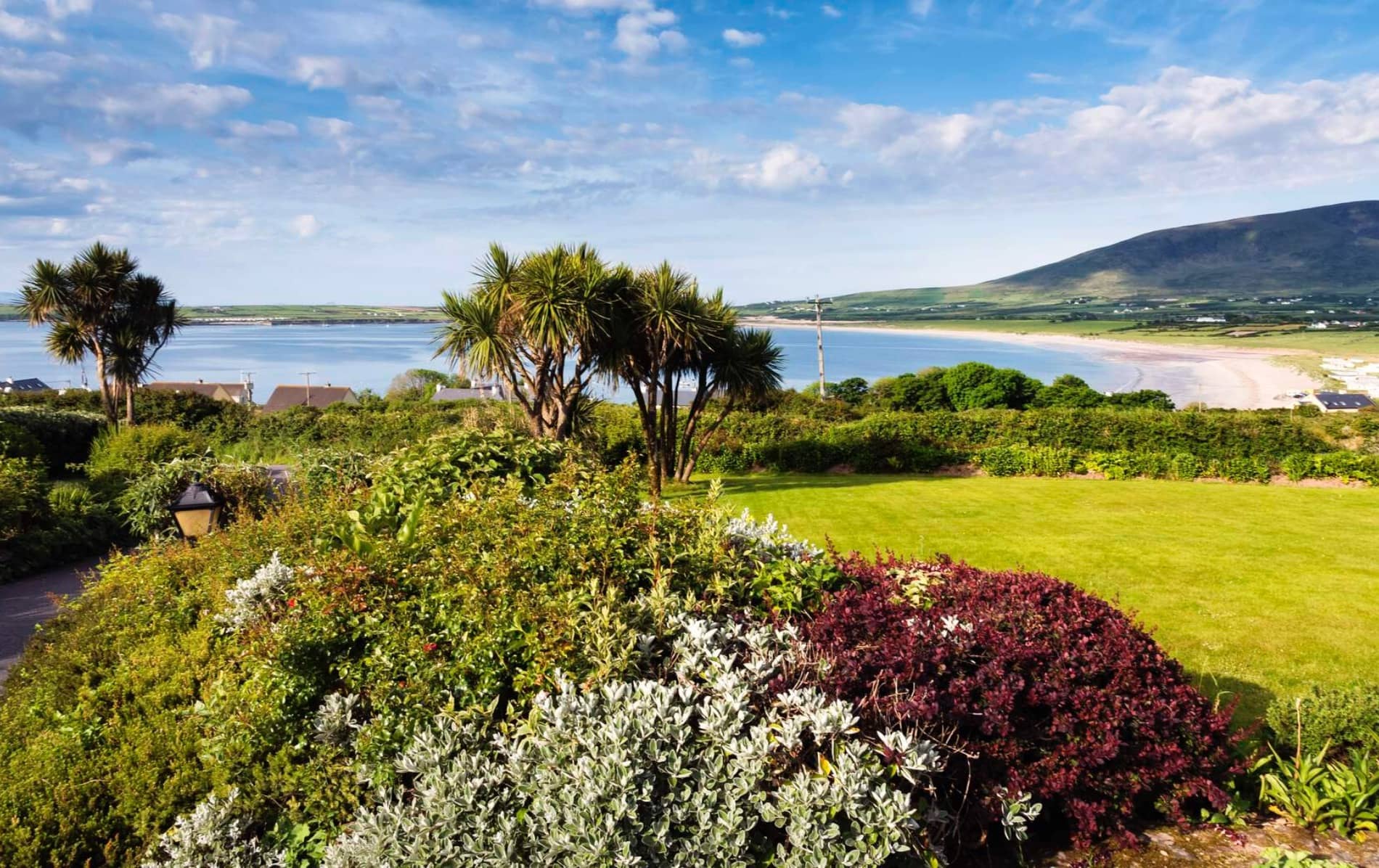
Day 4
Drive through historic sites and out of this world filming locations on the sublime Slea Head Drive…
Explore Day 4Get ready for adventure
Dunquin Pier, County Kerry

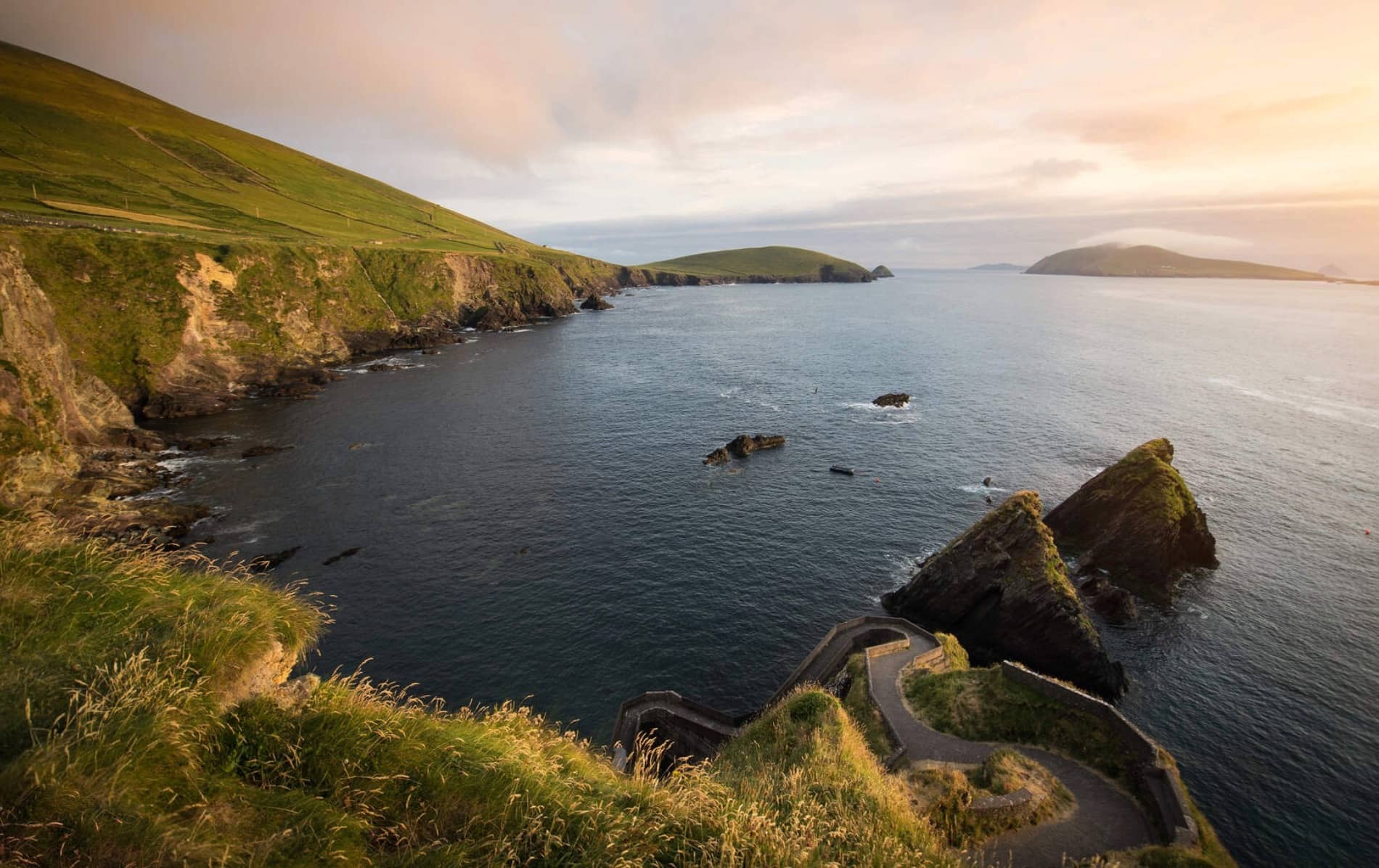
You’re spoilt for choice on the Slea Head Drive, thanks to a wealth of historic sights, gorgeous beaches and nice stop-offs along the route. Following the whole 38km route from Dingle, you can do a loop of this peninsula in around one hour, but it's definitely worth taking longer to enjoy things at a more leisurely pace. Your first stop should be to Ventry Beach, a gorgeous stretch of sand that goes on for around 3km. Walk the whole length of it, or just take a gentle stroll; either way, you won’t regret stopping at this Blue Flag beach.
Drive around 20-minutes down the road and you’ll find one of the most magnificent sights in Ireland: Dunquin Pier. Don’t attempt to drive down the tiny winding road to the pier as you will end up stuck. You can, however, park up and admire the view, or you can walk down the road to the pier and hop on the ferry to the Blaskets Islands.
If you have more time, stop by Caife Na Tra. It serves great food and equally great views.
3 km
Experience island life
Blasket Centre, County Kerry

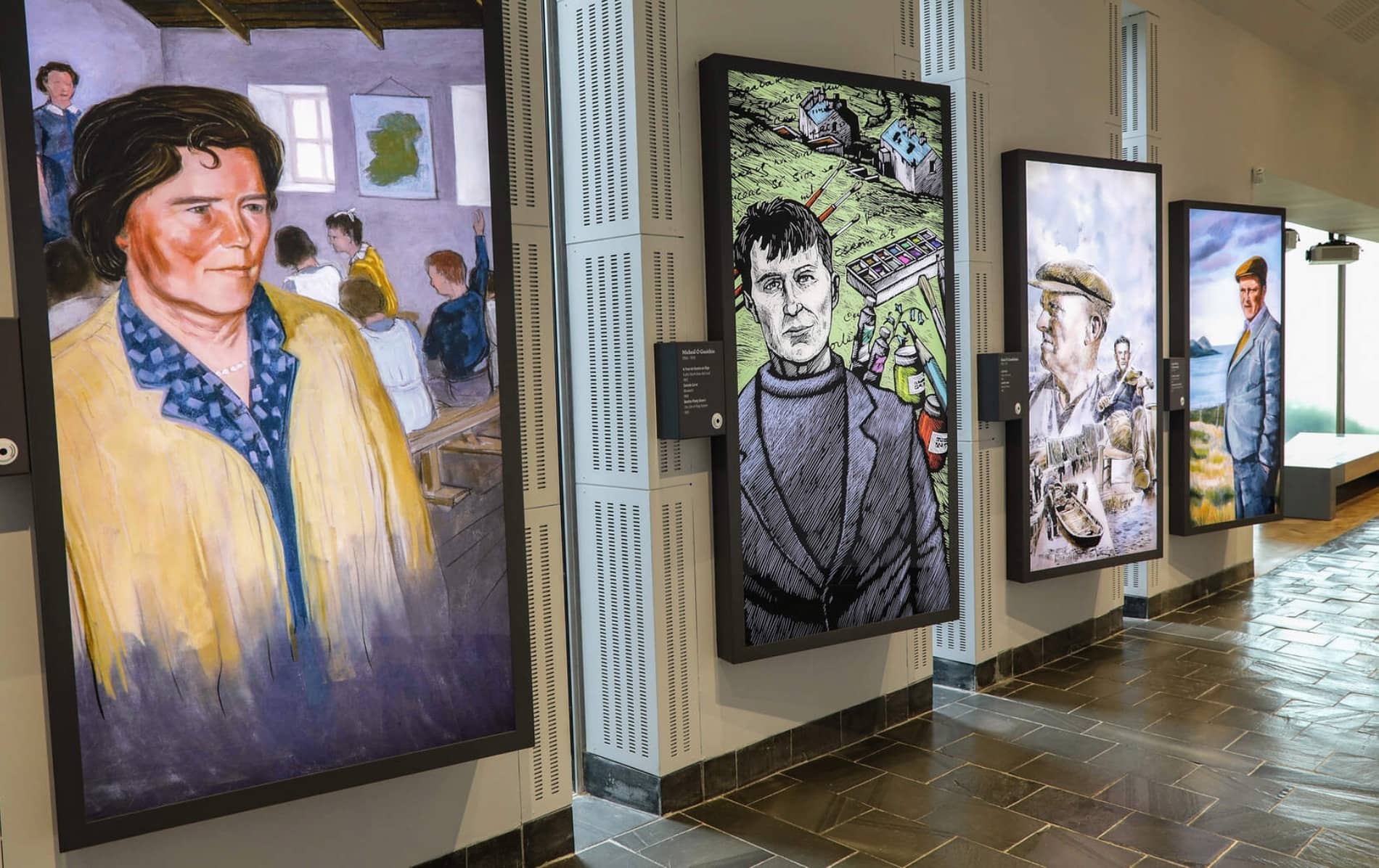
If you don’t have time to explore the Blasket Islands, but would like to know more about them, then head to the Blasket Centre, a museum dedicated to telling the story of the Irish-speaking inhabitants who lived on the Great Blasket Island until 1953. Many of the inhabitants became authors, detailing their way of life and providing invaluable records of social history. The centre is an amazing way to understand the unique way of life that the community led, from their everyday household items, music and songs to the ways they gathered food and fought against the elements. Learn their stories and admire this remarkably tenacious island community.
13 km
Step back in time
Gallarus Oratory, County Kerry

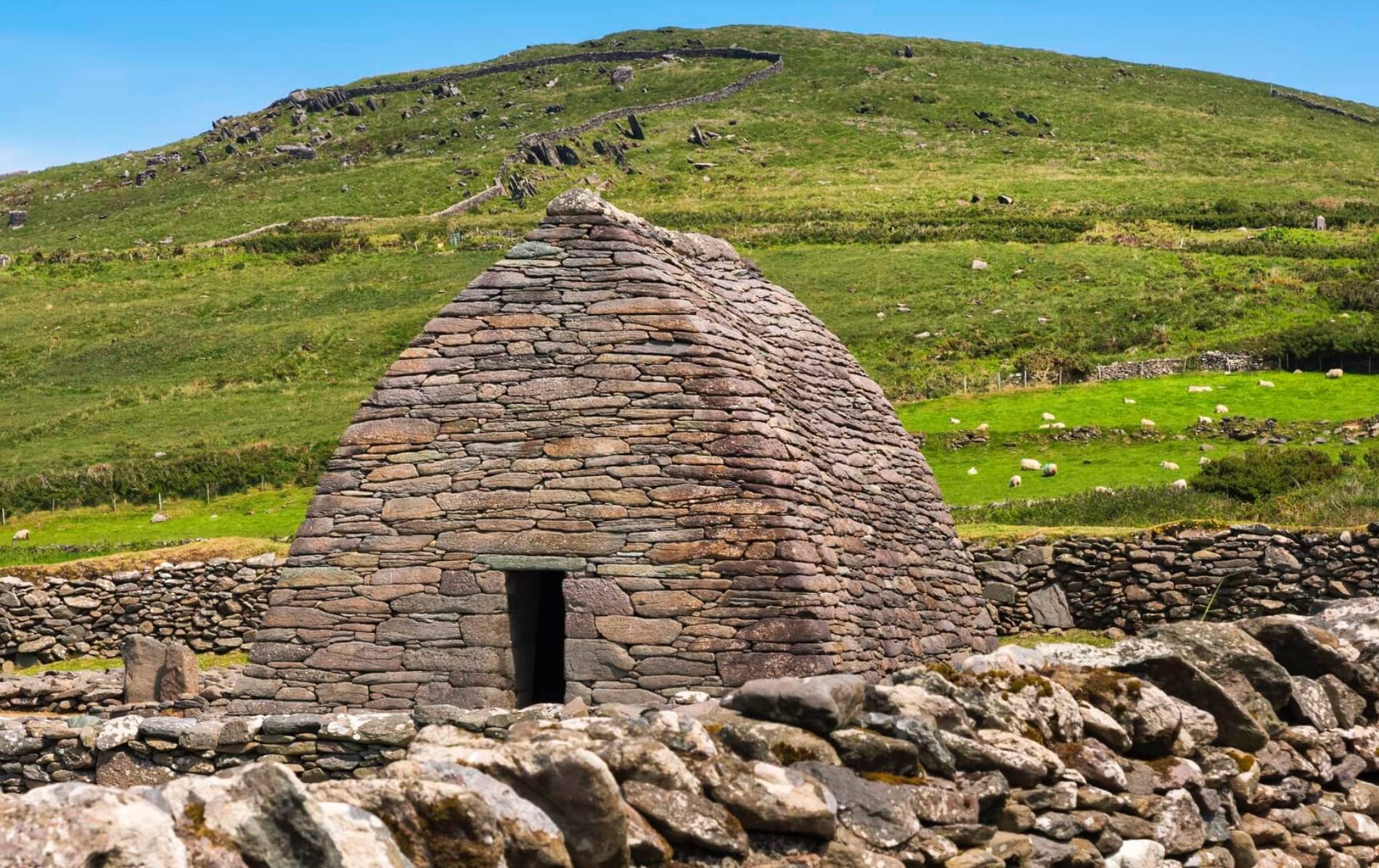
On your final stop of the day, head to the Gallarus Oratory. It’s one of the most popular stops on the Slea Head Drive and it’s easy to see why as it's one of the best examples of an early-Christian church in Ireland, and is estimated to date back to the 11th or 12th century.
Local legend says that if a person can climb out of the window of the oratory, their soul will be cleansed. However, as the width of the window is only 12cm, we wouldn’t recommend trying it!
Afterwards, head back to Dingle for dinner and refreshments in Land to Sea or Solas Tapas and Wine, and then afterwards settle in for the night in Dick Mack's or Kennedy's, to name but a few of Dingle's amazing pubs!
71 km

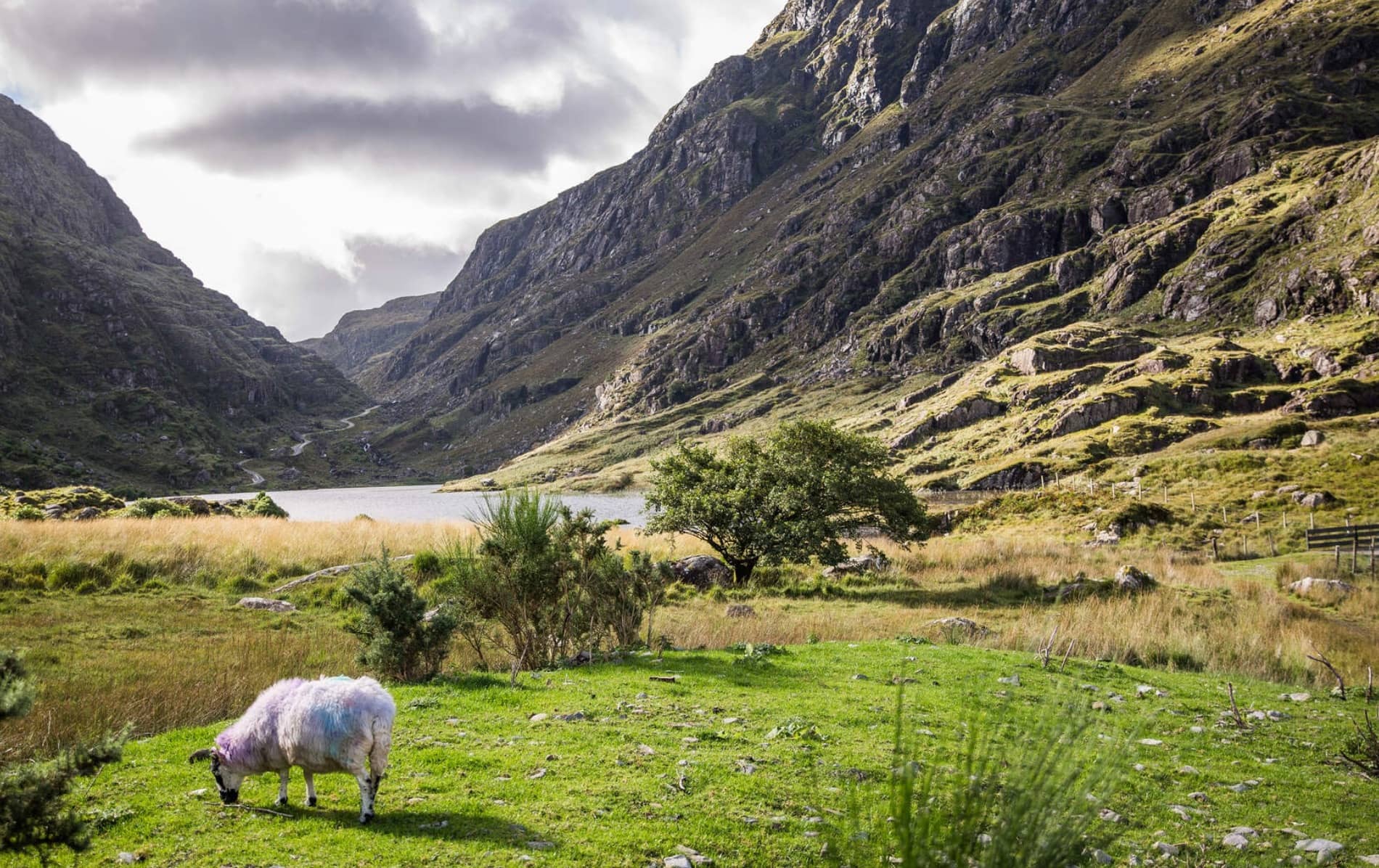
Day 5
Today, it’s all about getting to know the famous spots that can be found on the epic Iveragh Peninsula.
Explore Day 5Explore nature’s paradise in this National Park
Muckross House & Gardens

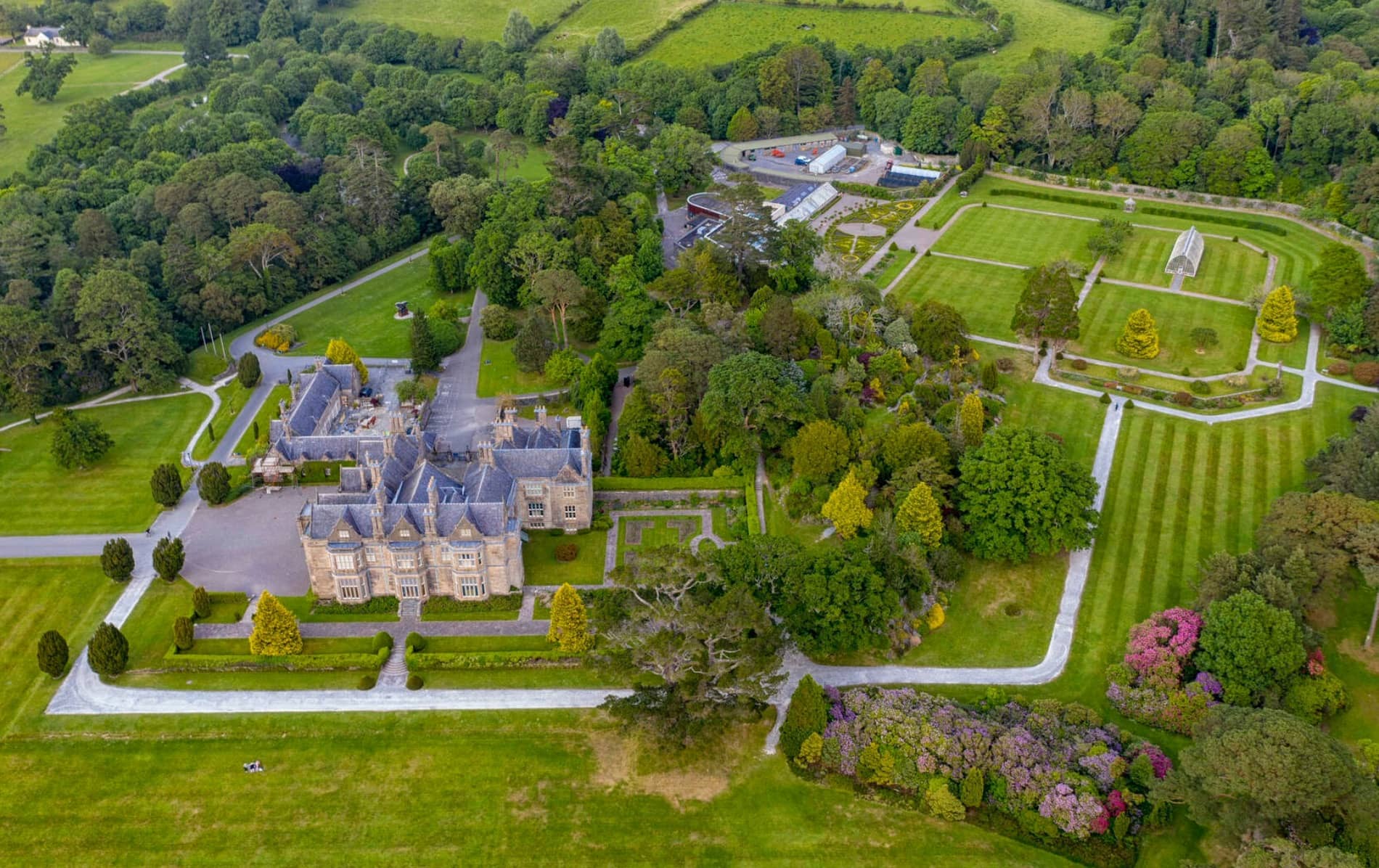
From Dingle, you can take the N86 to Killarney National Park. The park is exceptionally beautiful, and it’s guaranteed that you’ll want to while away a few hours here. Waterfalls, lakes, forest landscapes including wonderful ancient trees and mighty redwoods, are just some of its many special features.
There are a number of walking trails, including from the 19th century Muckross House to the nearby abbey or short walks along the lake shores. Alternatively, you can hire carriages or bikes for the afternoon to complete a circuit of the lakes.
28 km
Fit for a king
Leacanubuaile Stone Fort, County Kerry

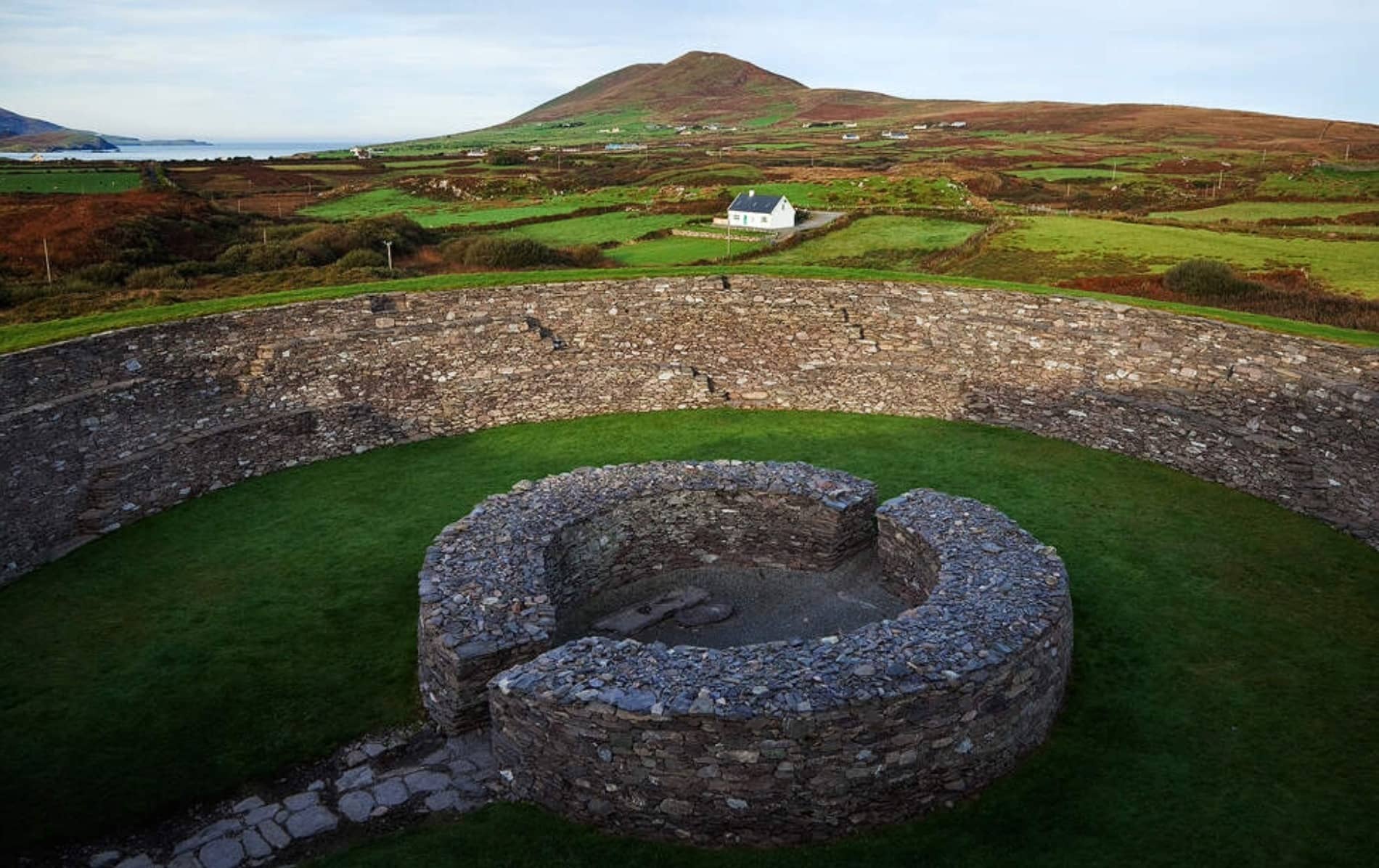
Head in an anti-clockwise direction on the N72 out of Killarney National Park and you’ll arrive in Killorglin, a small town famous for the Puck Fair every August when a goat is crowned king. If you’re here in August, join in the coronation and celebrate with food, live music and great entertainment.
Follow the southwest coast of County Kerry on the N70 and you’ll find yourself in Cahersiveen. Ask for sightseeing recommendations from the locals and you’ll receive a different reply from everyone! Attractions nearby include Staigue Fort, one of the most beautiful ringforts in Ireland and Ballycarbery Castle, both of which are easy to reach by bicycle or even on foot.
If you have more time, you may like to visit Valentia Island – take the R565 and cross the toll-free bridge from the picturesque port village of Portmagee, then you can return the way you came or else opt for the the five-minute car ferry from Knightstown. At the jetty for the ferry you can buy freshly caught fish and lobster for dinner.
For your accommodation, stop at Mannix Point Camping and Caravan Park which can be found just outside Cahersiveen.
60 km

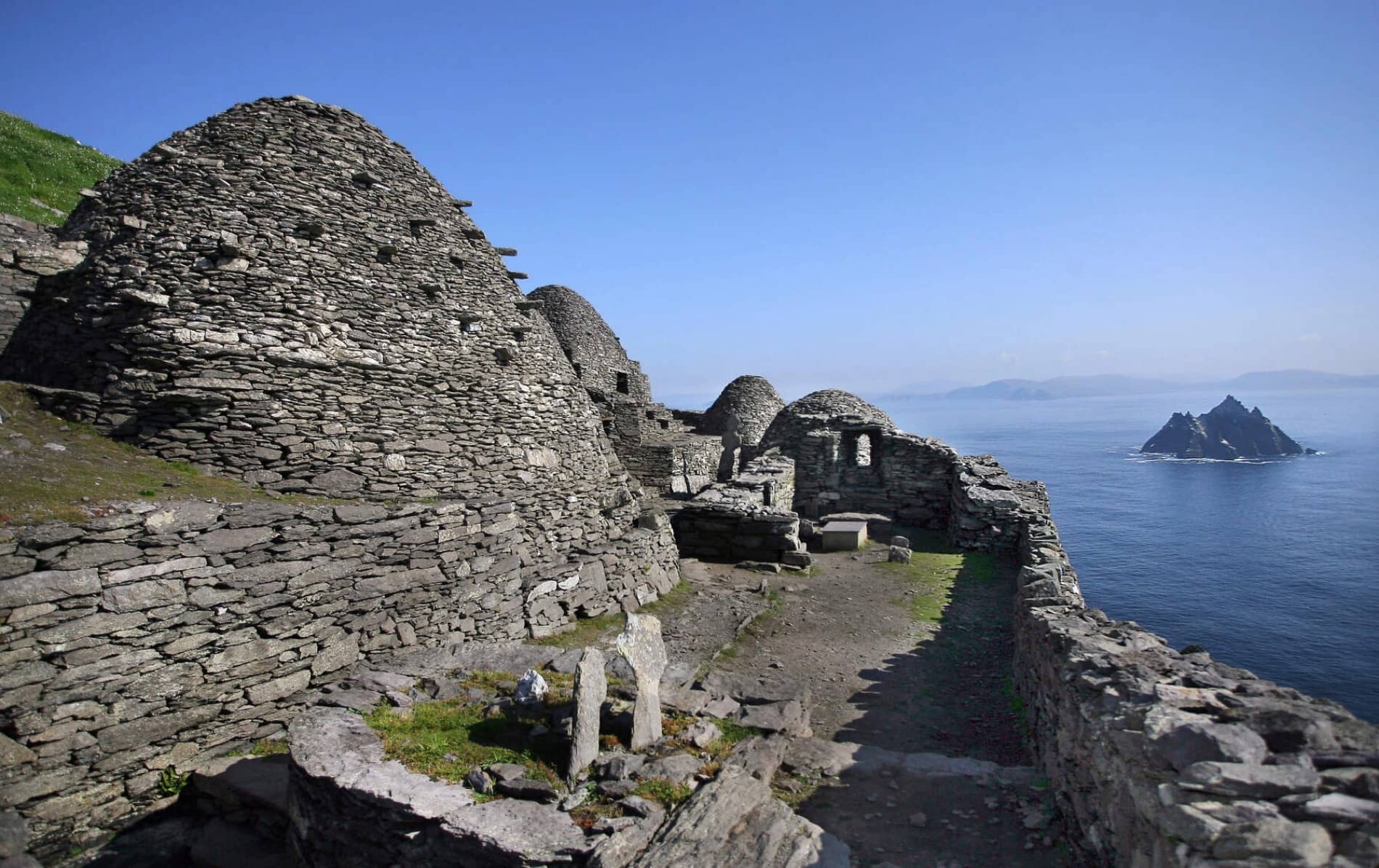
A star of the silver screen
The Skelligs

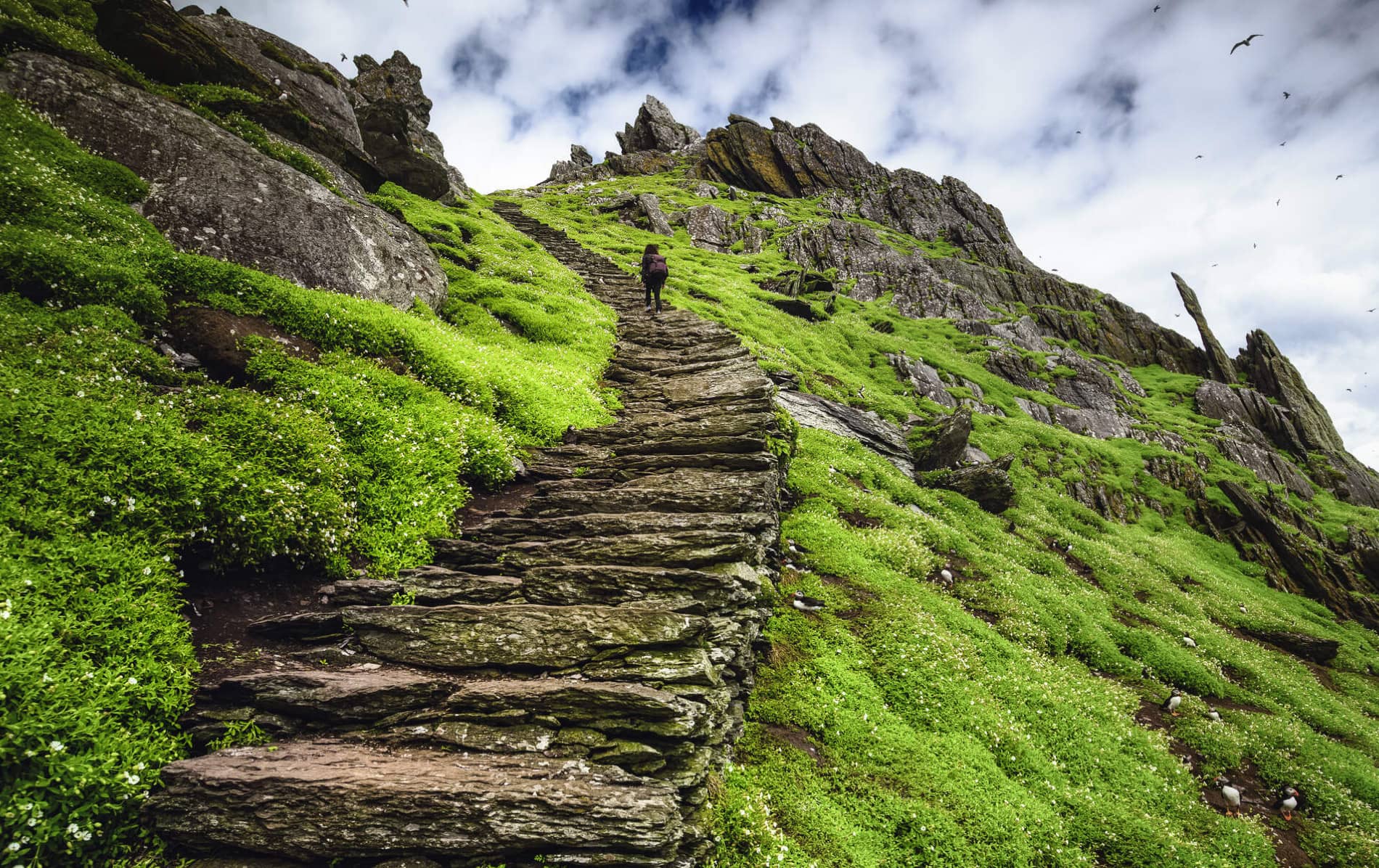
On your trip around Valentia Island, you may have noticed the Skellig Islands to the southwest. This UNESCO World Heritage Site can be visited by boats operating from Portmagee, Ballinskelligs and Caherdaniel. You can also sail around the island and see up close the filming location of Star Wars: Episode VII and VIII.
In fact, this is just one of the many Star Wars filming locations that can be found all along the Wild Atlantic Way. Of course, these boat trips are weather dependent and can be cancelled at short notice.
After Portmagee, the road turns southwards and winds along the wonderful coast on the narrow Skellig Ring road before joining the R567 and then finally the wider N70.
22 km
Holiday heroes
Parknasilla Resort, County Kerry

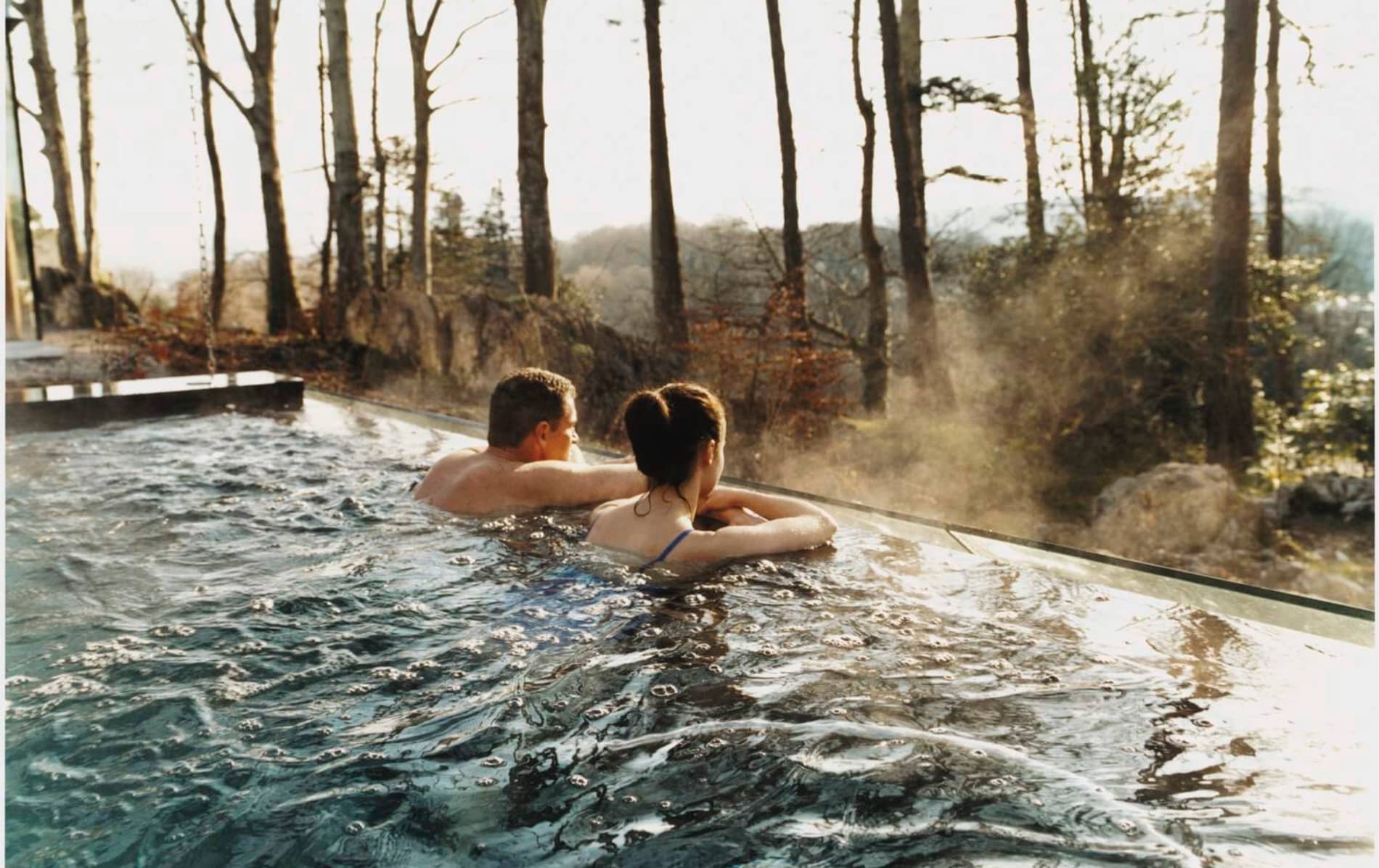
Your next few stops are all about visiting the small yet charming towns and villages that can be found on the Ring of Kerry. First off is Waterville, where you can meet Charlie Chaplin, or, at least you can meet a life-sized bronze statue of him. During the 1960s and 1970s, he chose Waterville as his holiday destination. Another interesting spot is Caherdaniel, home to Daniel O’Connell, who was nicknamed “Ireland’s Liberator”, as he fought for Catholic emancipation in the mid 1800s.
A stroll is called for in colourful Sneem where you can relax or have a spa day at the Parknasilla Resort. Or, there’s the beautiful small town of Kenmare, which has repurposed its historic buildings into great cultural hubs such as the Carnagie Arts Centre or the Kenmare Heritage Centre. Head towards Kenmare Pier and you’ll be able to see the Beara Peninsula.
Towards the end of the day, drive on the N71 towards Glengariff in County Cork and settle in for the night in Glengarriff Caravan and Camping Park.
105 km

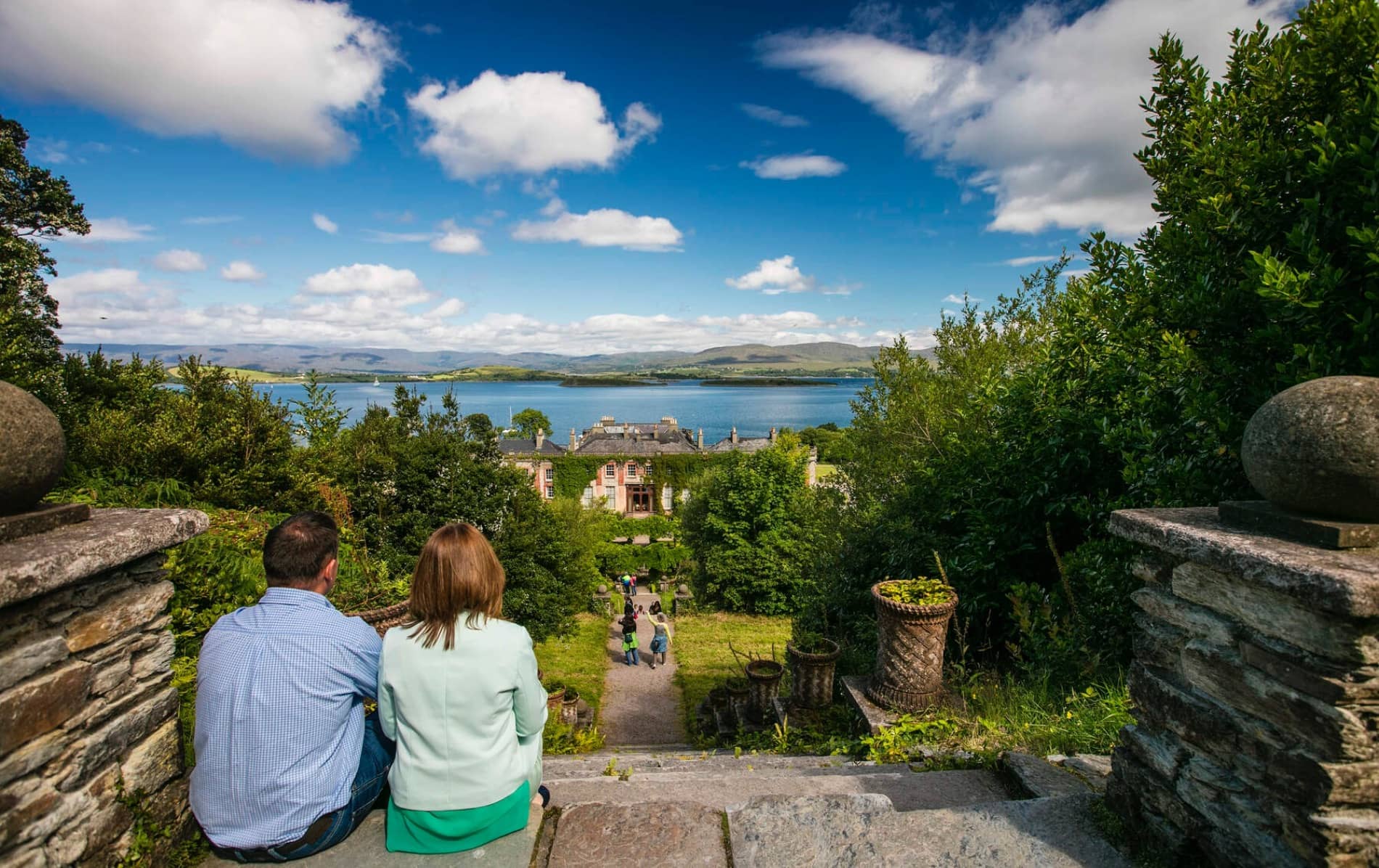
Day 7
From here, journey through West Cork before discovering the historical sites of the Copper Coast in County Waterford and more in Ireland’s Ancient East.
Explore Day 7The beauty of Bantry
Bantry Bay, County Cork

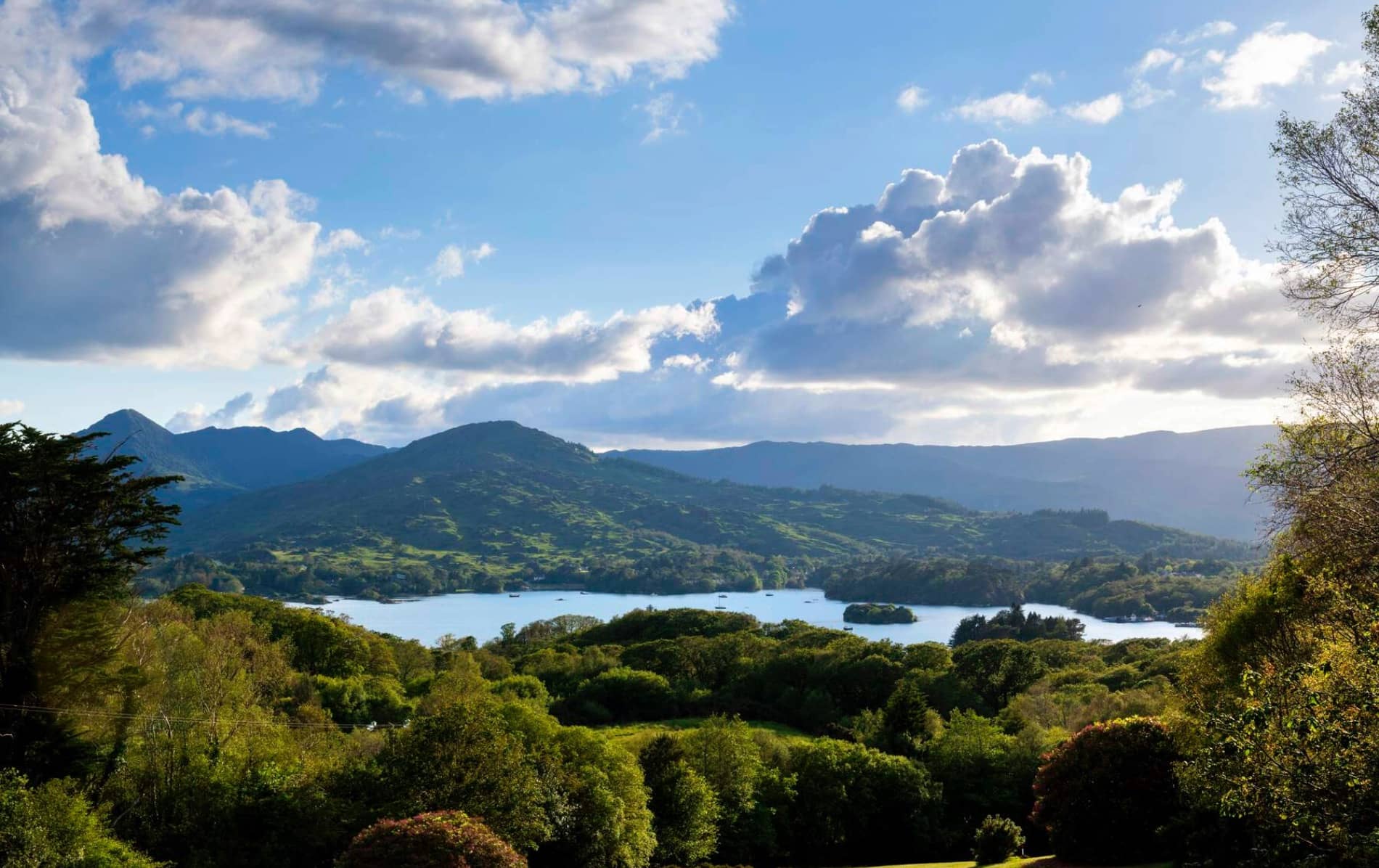
Wherever you go in Bantry, from its natural harbour – which is one of the deepest in the world – to its town square, you’ll be surrounded by beauty. Located between the Sheep’s Head and Beara Peninsula, this town can be reached by driving along the N71 from Glengarriff and you’ll find this gorgeous town. Arrive hungry, though, as Bantry is a brilliant spot for super-fresh seafood. Head to the Fish Kitchen or O’Connor’s Seafood Restaurant and you’ll be sure to leave with a full stomach!
Don’t forget to stop by the 17th century Bantry House. The views over Bantry Bay are reason alone to visit, but the tour of the stunning house and gardens, which has been home to the Whites family since 1739, is well worth doing. If you’re here in June or July, you’re in for a special treat as the West Cork Chamber Music Festival is held in the house. Expect sopranos, dazzling symphonies and bewitching melodies from some of the best classical performers in the world.
28 km
The sights of Skibbereen
Lough Hyne, County Cork

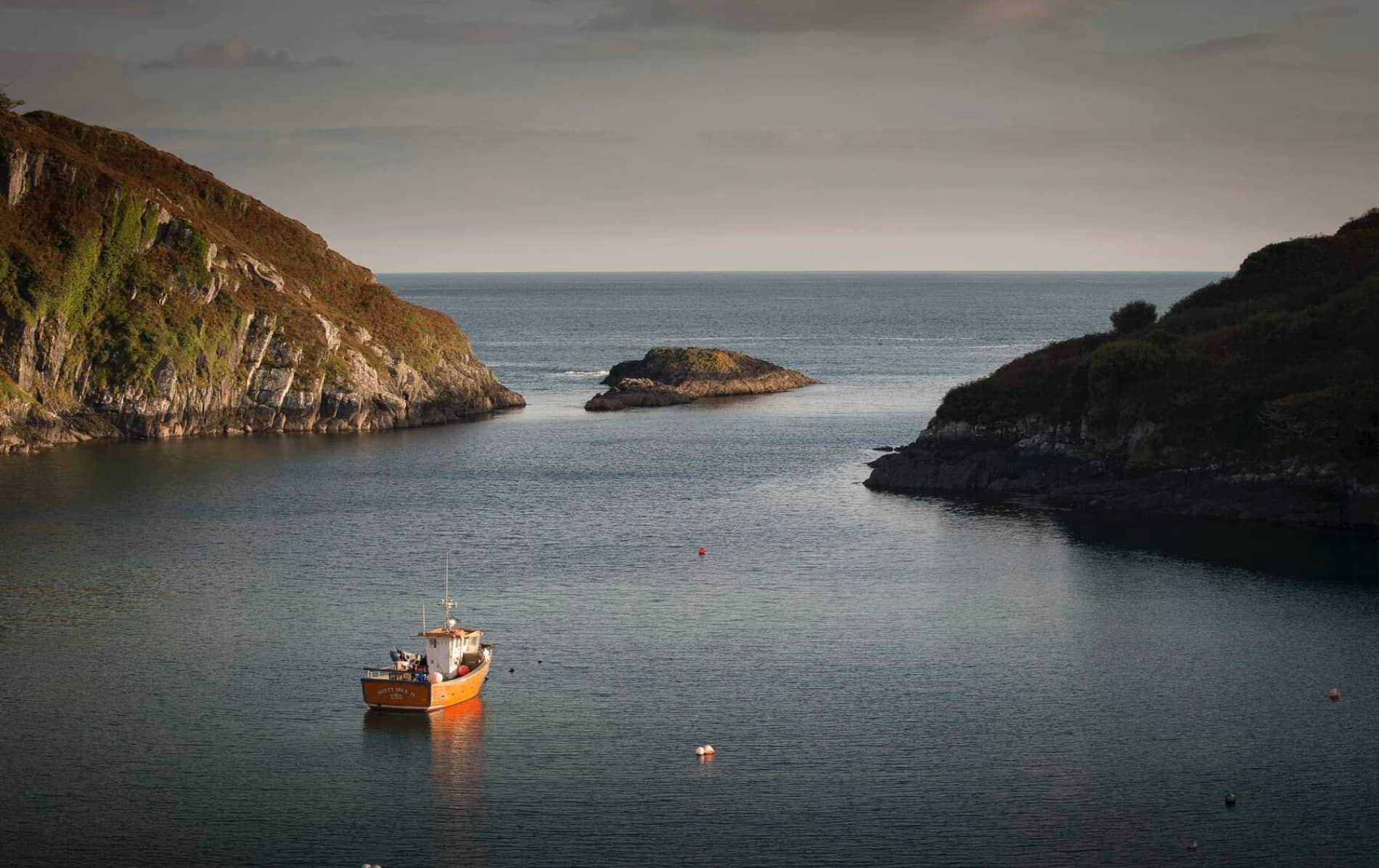
Your next stop of the day is Skibbereen. Continue on the N71 and you can’t miss it! It’s a great base to settle in if you’d like to stay a while in the area and explore your surroundings. A particular highlight is the many megalithic stone circles in the area, including the particularly magnificent Drombeg Stone Circle, only 20 minutes from Skibbereen.
If you’d like to taste the amazing food this region is famous for, take a trip to the Woodcock Smokery, located just outside the town where Sally Barnes runs masterclasses demonstrating the art of smoking wild fish. You’ll be rewarded for your hard work afterwards by eating the fish you lovingly prepared!
65 km
Take a bite out of Kinsale
Kinsale, County Cork

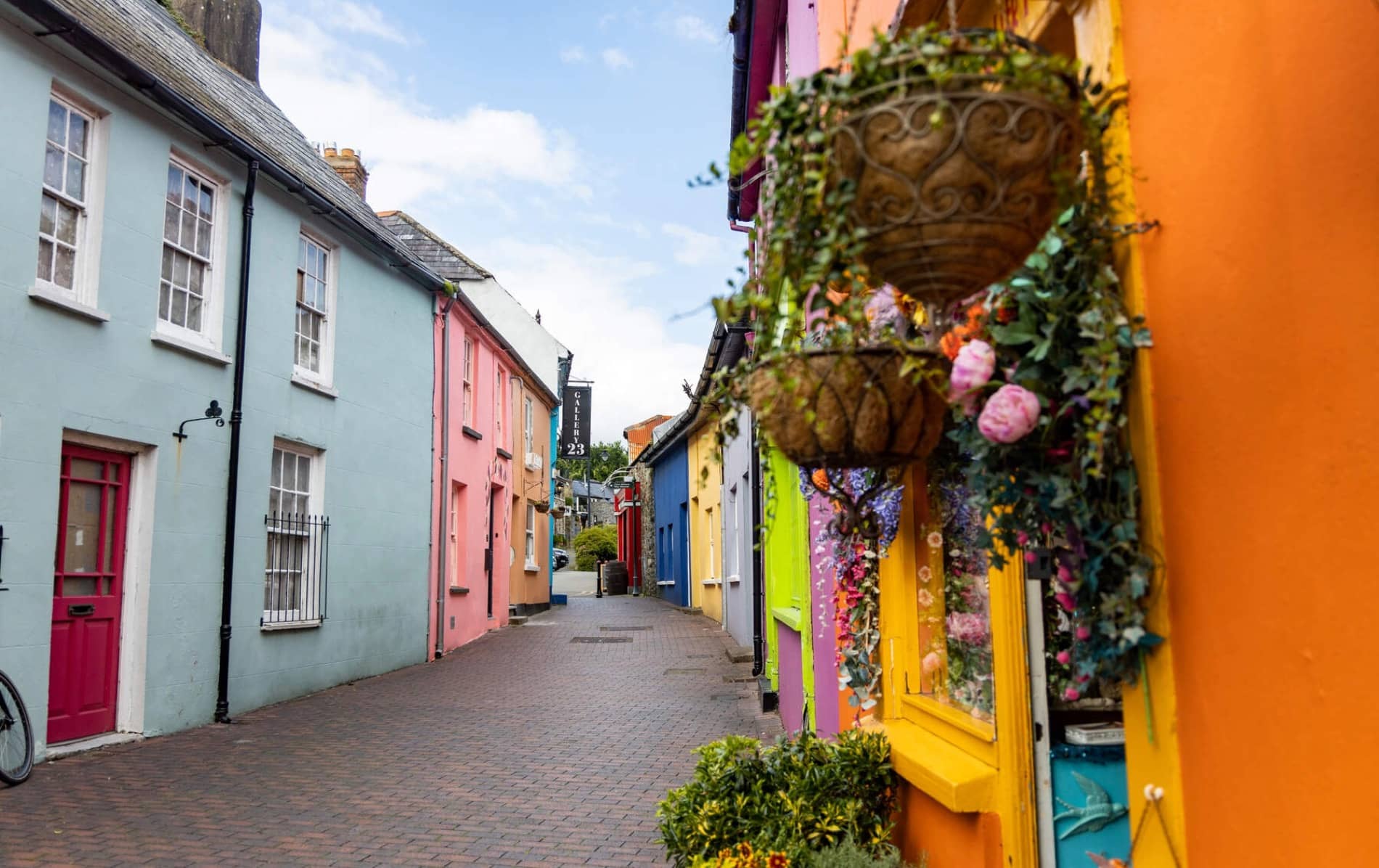
This town is the standout foodie star of the region. Not only will you be dazzled by the colourful shopfronts, you also won’t believe the amount of stellar restaurants which call this place home. These restaurants, like many in the region, emphasise the use of local produce in all of their dishes, so expect ingredients native to the area, including fish, cheese and smoked meats. For seafood lovers, we recommend stopping by Fishy Fishy Café or, for a touch of luxury, stop by Michelin Star restaurant Bastion.
Golfers can play a round at the Old Head Golf Links. Be careful though, the course is set on the towering sea cliffs of the promontory, so you may lose a few balls to the ocean! Afterwards, take a stroll around Kinsale’s most colourful streets or settle in for some oysters at The Bulman Pub, where you’ll be rewarded with amazing views of Kinsale Harbour.
Then head to Garrettstown House Holiday Park and settle in for the night.
27 km


Day 8
You’re nearly at the end of your journey along the Wild Atlantic Way, but adventures in Ireland’s Ancient East are calling…
Explore Day 8The “real” capital of Ireland
Cork city

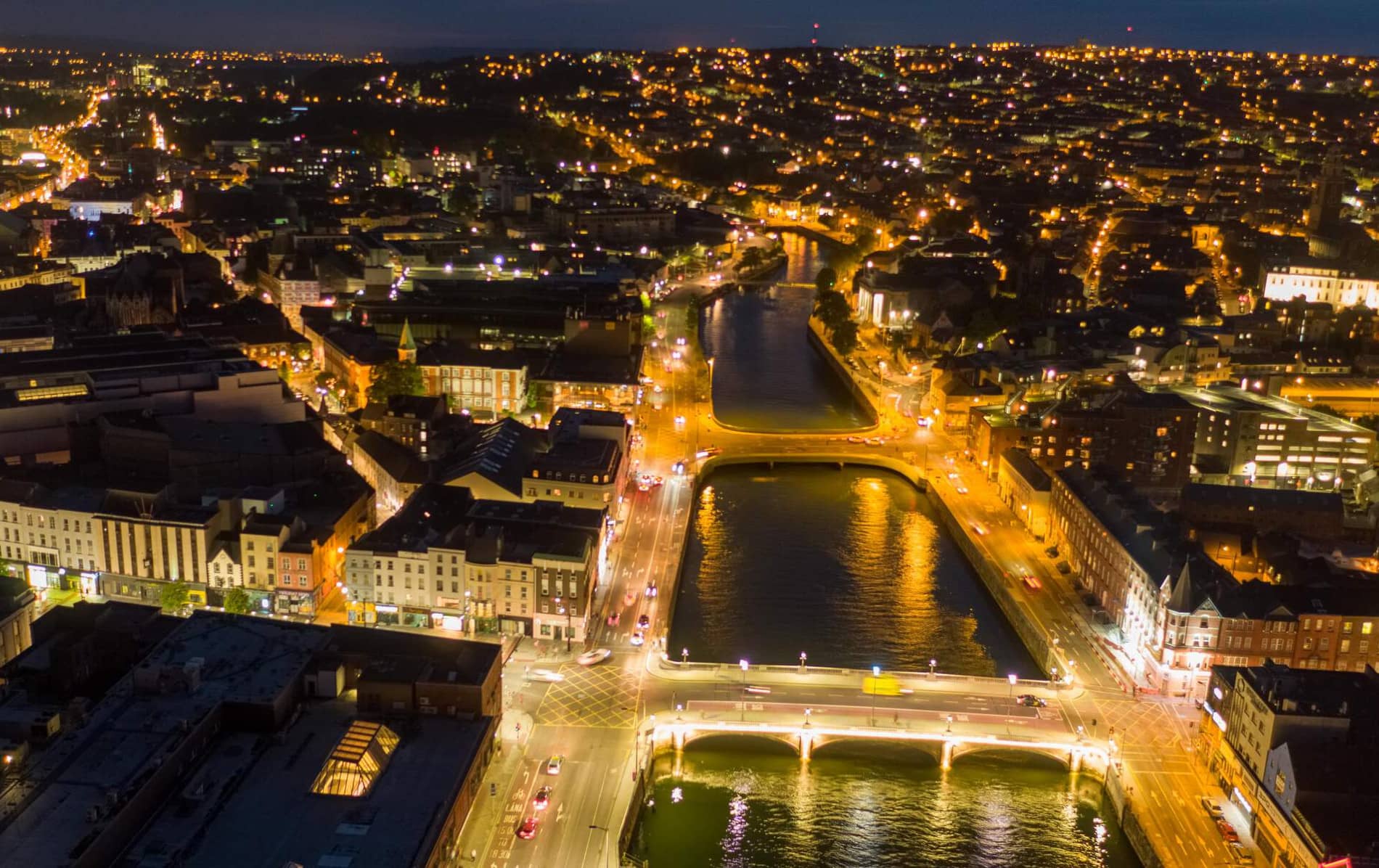
Ask anyone in Cork and they’ll tell you that “The Rebel County” is the real capital of Ireland. Cork city is always a delight to explore with its buzzing coffee shops, art galleries and independently owned boutiques. The city can cater to all budgets, too, with many of its museums and art centres boasting free entry. Take a free walking tour and get to know the city better, or ring the Bells of Shandon at St Anne's Church – if you feel like climbing the 132 steps to the top, that is!
Just like in West Cork, you’ll find food to suit every taste here, but a must-visit is the English Market. It’s been a fixture of the city since 1788, and is considered one of the best markets in Ireland with more than 55 stalls boasting traditional delicacies and amazing local flavours.
22 km
Meet history maker Cobh
Cobh

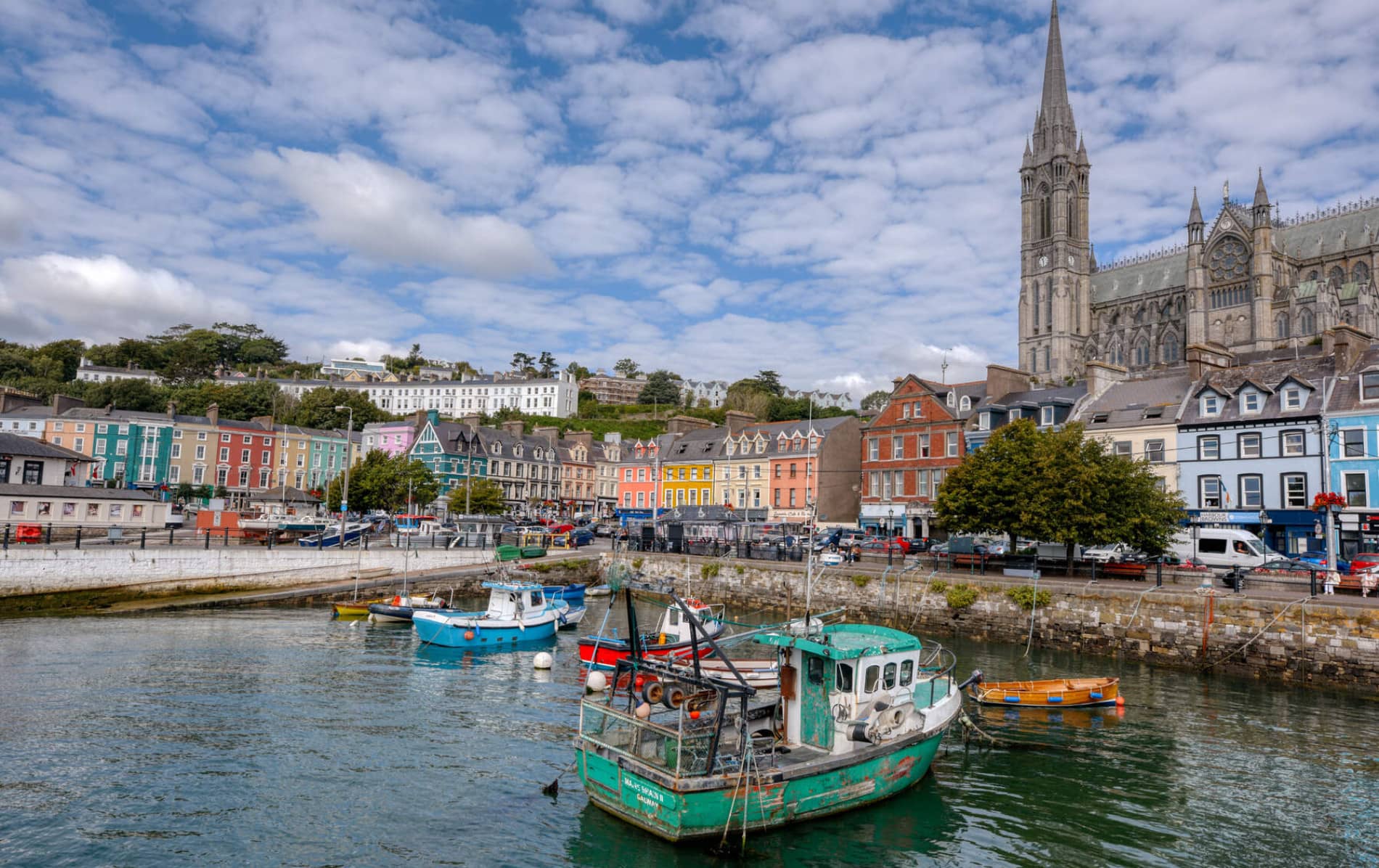
It may be small, but the history of this place looms large. Cobh is located just outside Cork city, so it’s a great pitstop for the day. Cobh’s harbour has seen many a goodbye as this was once an emigration port, and was often the last port of call for those sailing to their new life in America. It was also the last stop for the Titanic when it set sail on its fateful journey. The Titanic Experience Cobh is an excellent museum on the harbour, detailing the tragic story of Irish emigration as well as that of the Titanic.
18 km
A sip of history
Midleton Distillery, County Cork


Whiskey fans will be tempted to take a detour off the N25 once they leave Cork city to visit the Jameson Midleton Distillery. Sip on some of Ireland’s most famous whiskies, including Jameson, Redbrest and Powers, and learn about the history, heritage and culture behind these famous tipples on a Distillery Experience Tour.
Afterwards, stay on the N25 and drive towards the coastal delights of Dungarvan in County Waterford, home to the beginning (or end, depending on how you look at it!) of the Waterford Greenway. This is a gorgeous 46km long car-free route along an old railway line, stretching from Waterford city to Dungarvan. You can cycle or walk the route at your own pace, admiring the ever-changing backdrop of mountains, sandy beaches, viaducts, bridges and more.
For accommodation, you’re spoilt for choice in Dungarvan with Bayview, Casey’s and The Getaway – Eco Camp all ready to serve your needs.

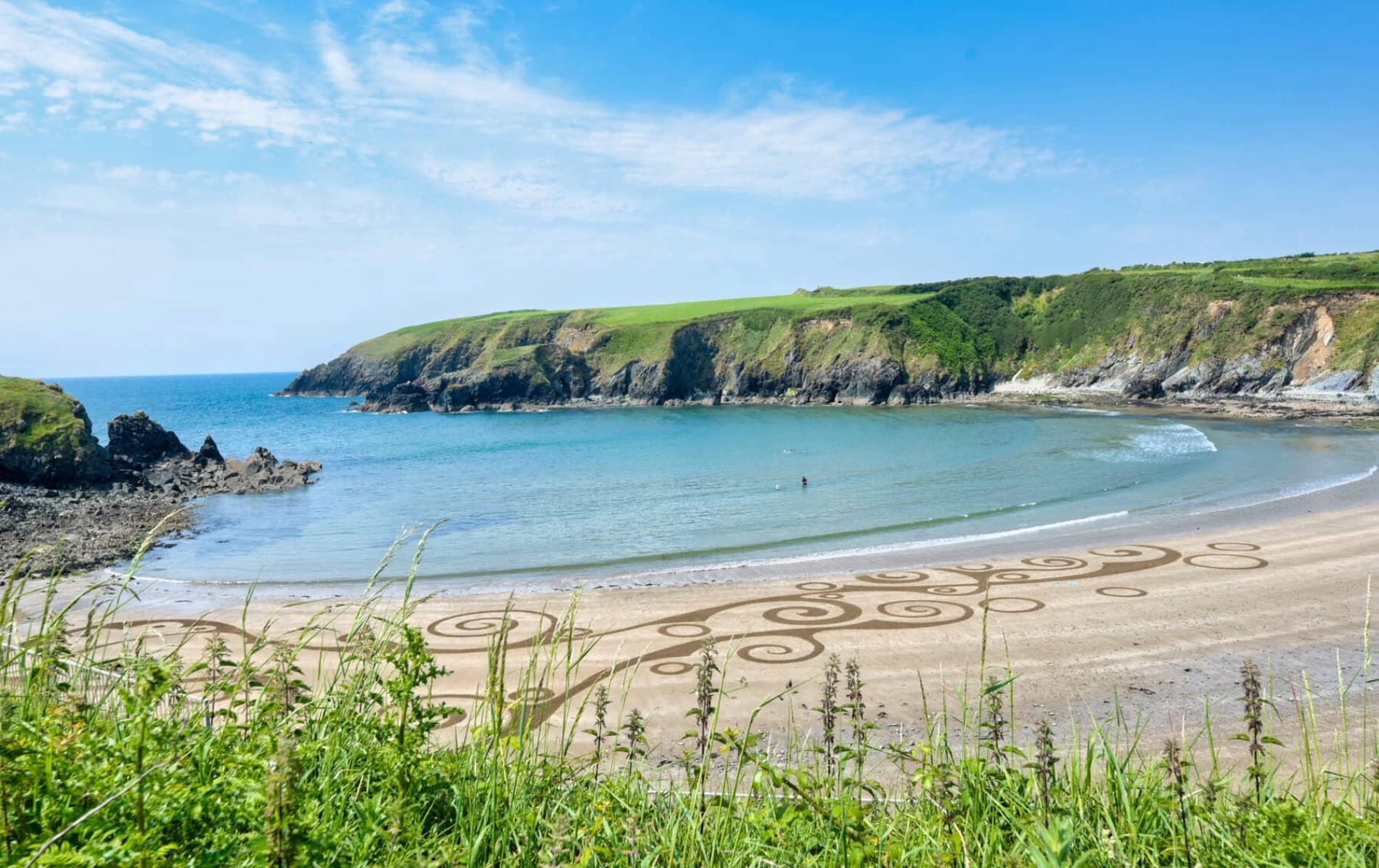
Day 9
Who knew history could be so fascinating? Explore the geological marvels along the Copper Coast before discovering a 1000-year-old city…
Explore Day 9Scenic delights on the Copper Coast
Copper Coast, County Waterford

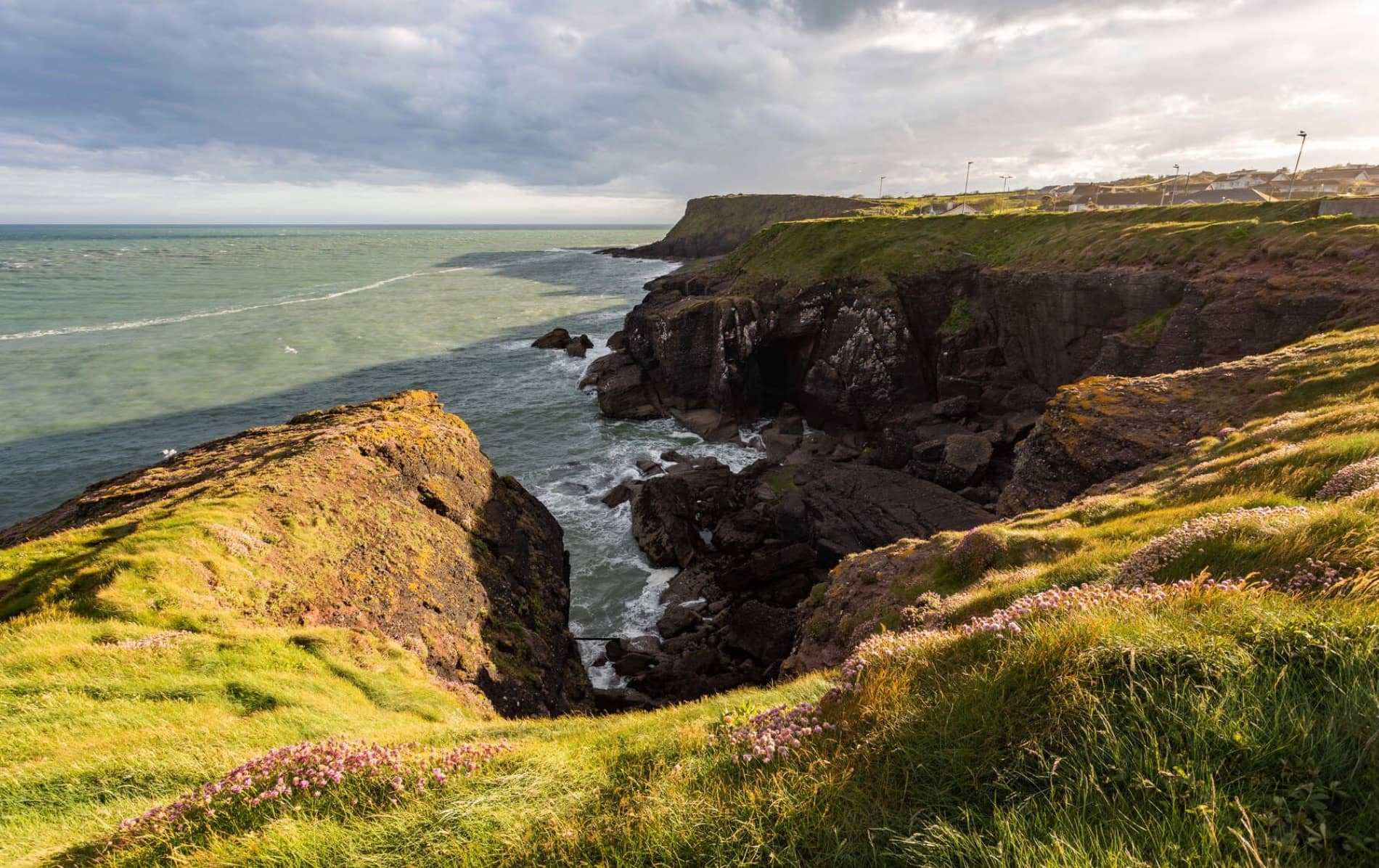
From County Cork, continue driving east until you hit County Waterford's Copper Coast UNESCO Global Geopark, where you’ll be transported on a journey through geological history, heading back some 460 million years. So named for the copper mining that took place here until the 19th century, this landscape tells a story of upmost geological importance.
It’s here geologists and other experts were able to examine extinct volcanoes under the sea, ancient deserts and even ice ages. You can explore it all on the six official walking trails, where you’ll be introduced to the rich heritage and history of the area. Or, join local guides on a two-to-three hour tour where you’ll learn how important copper once was to this area.
25 km
The wonders of Waterford
Medieval Museum, County Waterford

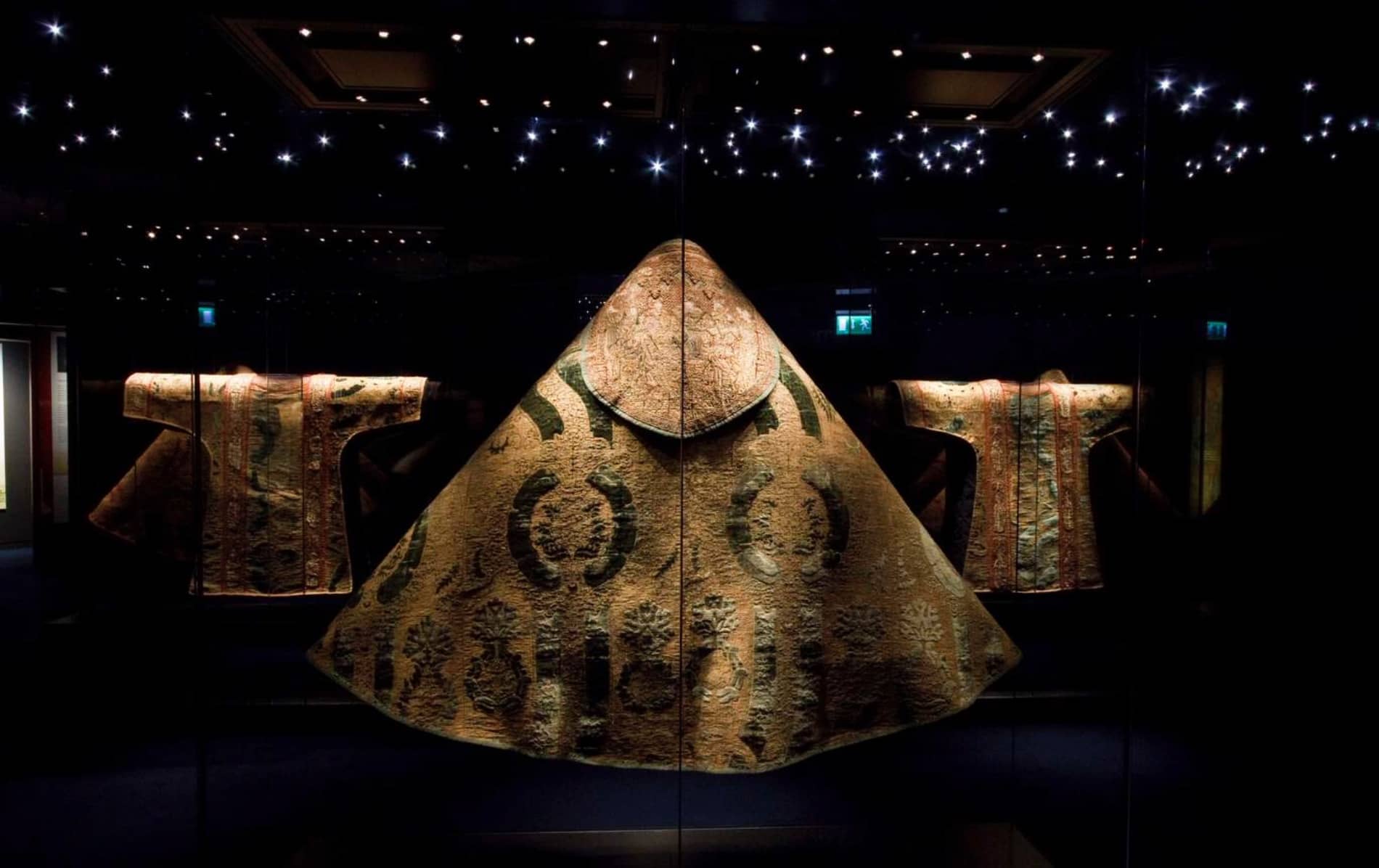
Say hello to the oldest city in Ireland: Waterford. This ancient hub was founded by the Vikings in 914, and the city wears its history on its sleeve. Reginald’s Tower, situated in what is known as the Viking Triangle in the city, has been in continuous use for over 800 years and is a great way to uncover the Viking history of the city. There’s also 15th century exhibits on display at the Medieval Museum. Bishop’s Palace is also worth a look. This dazzling 18th century townhouse full of Georgian and Victorian era treasures.
And don’t forget one of Waterford’s most famous spots, the House of Waterford Crystal, which has been part of the fabric of the city since 1783. On a factory tour, you can see how molten crystal is shaped, blown and formed into the amazing pieces we know and love.
But it’s not all history and heritage, this lively city boasts a great food scene, and a good place to get a sense of it is at the Waterford Country Market every Friday. For dinner, there’s the award-winning Momo Restaurant or Emiliano’s for authentic Italian fare. Afterwards, bunk down at Newtown Cove Caravan Park for a great night’s sleep.
28 km

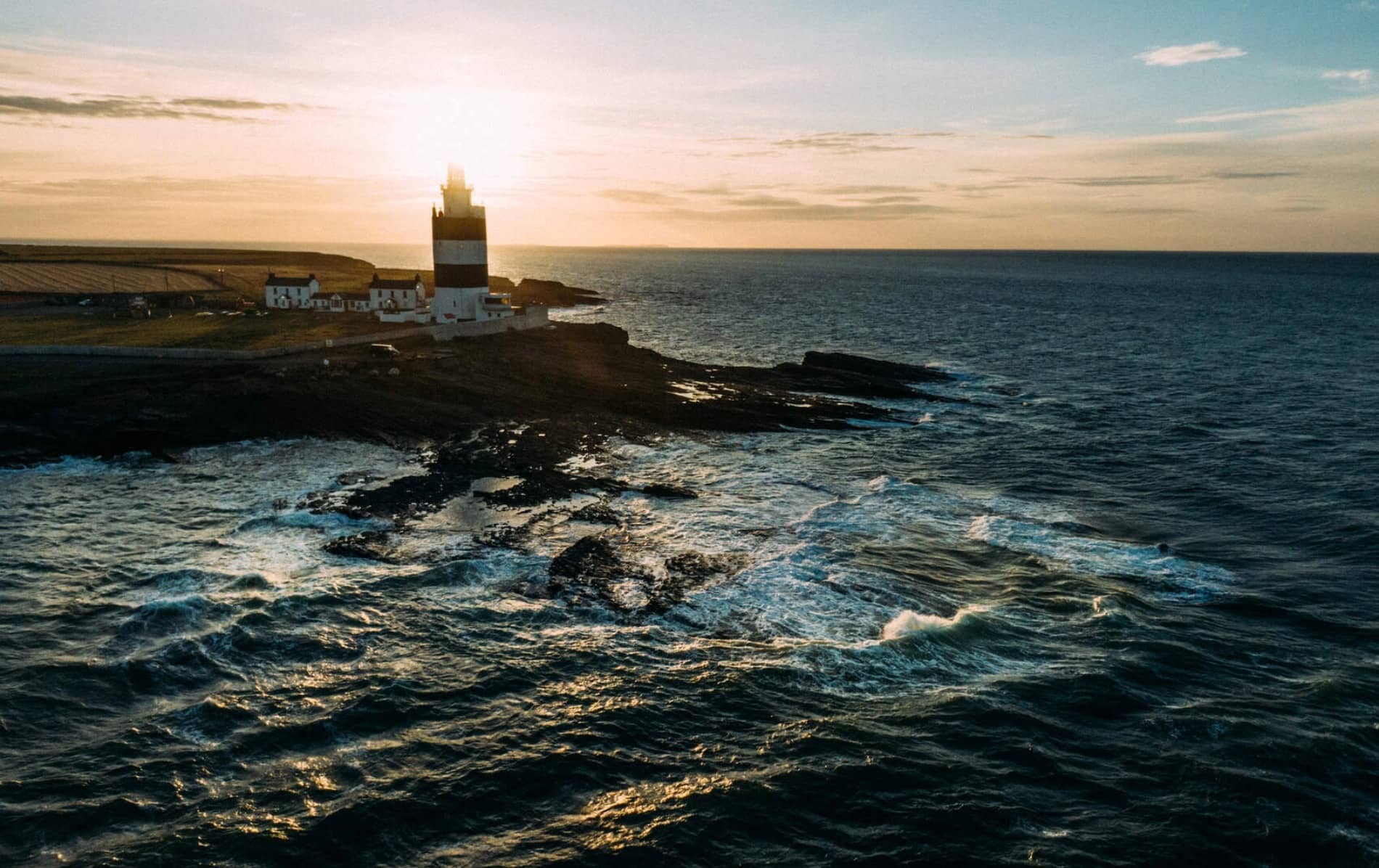
Day 10
The ancestral home of presidents, the oldest operational lighthouse in the world and proud bearer of the “Sunny South East” tag… We can only be heading to County Wexford
Explore Day 10A house, a home
Dunbrody Famine Ship, County Wexford

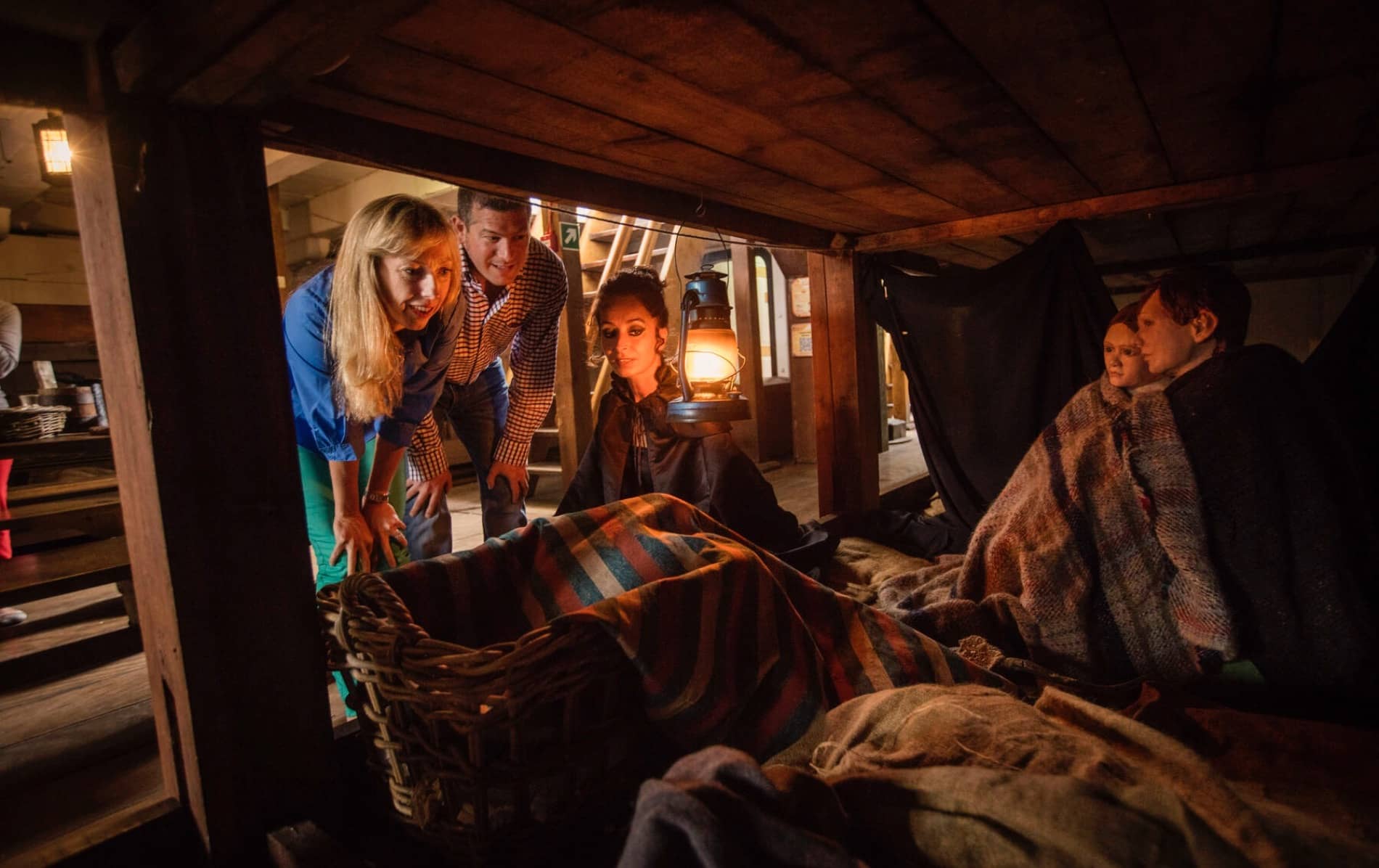
Just across the border from County Waterford, you’ll find New Ross. Like many towns across County Wexford, New Ross is all about heritage. It was once a thriving port town during medieval times and in the 19th century, it became known for the “Famine Ships”, so named for the arduous journey many Irish emigrants would make in search of a better life in America. Many passengers didn’t survive the journey, as the conditions were often squalid. Today, you can tour a replica of Dunbrody Famine Ship, and see how difficult life was for many of the passengers.
Just outside of the town, you’ll find a humble home belying its presidential proportions. It was here that John F Kennedy’s great-grandfather, Patrick Kennedy was born. The Kennedy Homestead celebrates the Kennedy dynasty, those that had to leave for a better life in America, and those that stayed. JFK visited the homestead in 1963 and met some of his cousins for tea, calling it “the four best days of my life”. Even today, the farmstead is looked after by Kennedy descendants.
37 km
Shining a light on the Wexford coastline
Hook Lighthouse, County Wexford

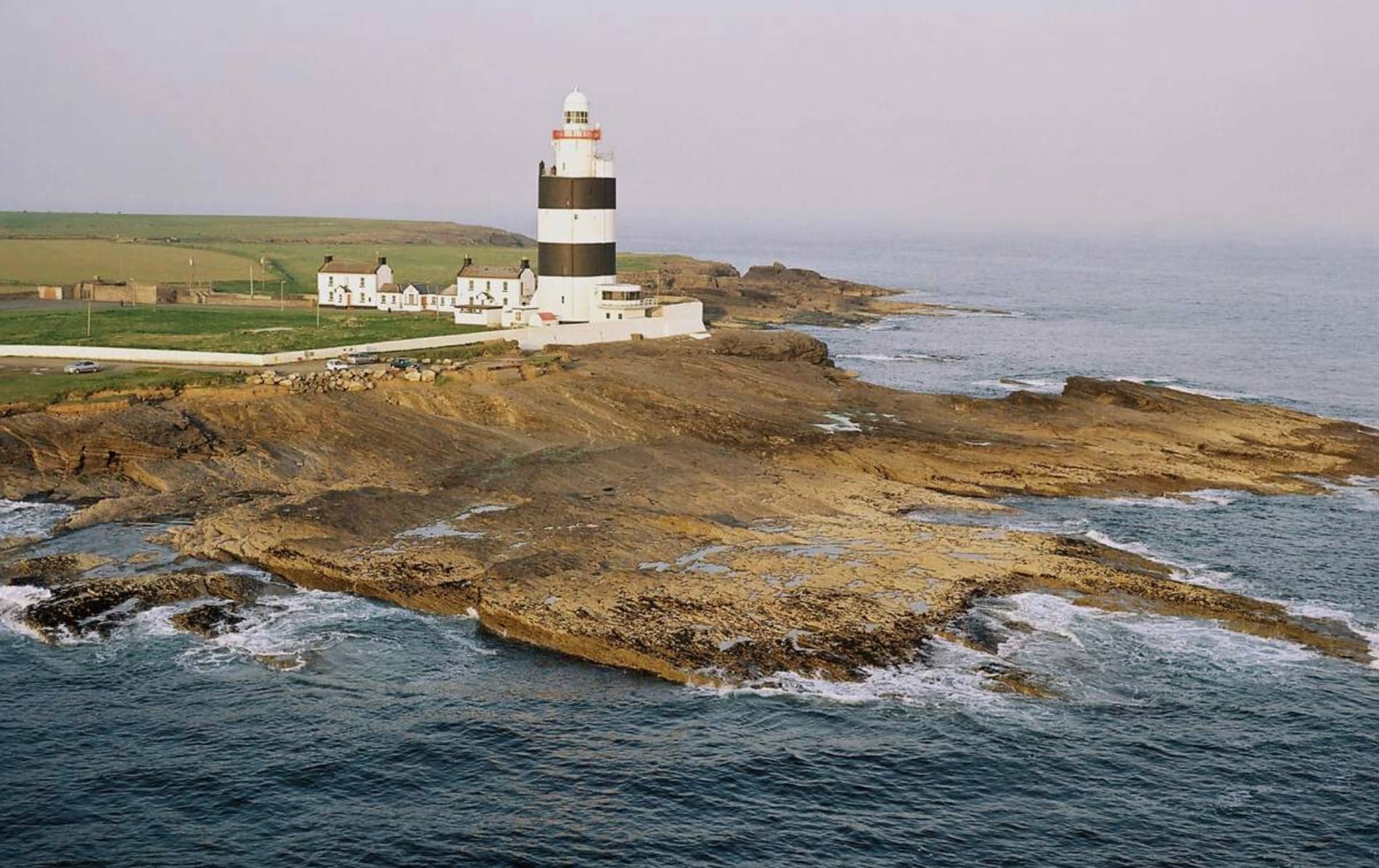
The history tour doesn’t stop there. We’re heading now to a time of monks and knights with a tour of the oldest operational lighthouse in the world, Hook Lighthouse. Located on the Hook Head Peninsula, there has been a light lit here since the 5th century when Welsh monk St Dubhán would warn ships of the treacherous limestone rocks.
A tower was bult here in the 13th century by William Marshal, to help guide ships to nearby New Ross. Inside, you can see more of this amazing slice of history, and take breathtaking views of the peninsula, so long as you’re happy to climb the 115 steps to the top!
For those departing Wexford, head to Rosslare on the R734, R733 and N25, where a ferry terminal will take your caravan or camper van home…
Staying on? Then journey back to ancient history at the Irish National Heritage Park, a faithful replica of what life was like over 9,000 years ago in Ireland. You can even stay the night here and experience life as a Viking... minus the pillaging, of course.

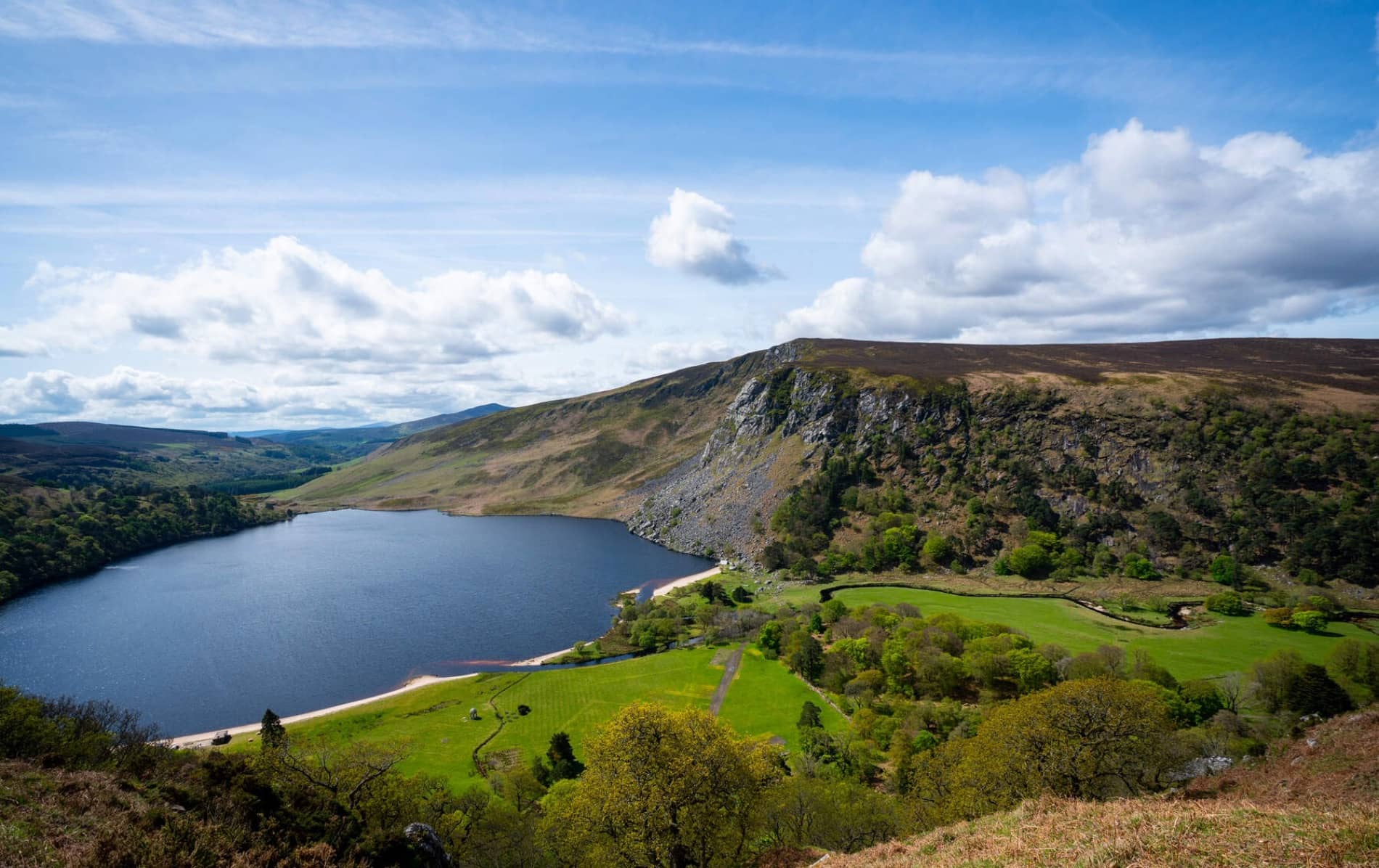
Day 11
For those heading to Dublin, there’s still a few adventures to be had on the east coast…
Explore Day 11Wicklow wonders
Powerscourt Estate, County Wicklow


If your adventure ends in Dublin, then use the M11 to drive to Dublin port with your caravan or motorhome. If you’re not in a hurry, stop by the Wicklow Mountains National Park. It’s the largest of Ireland’s National Parks, and is home to beautiful Glendalough, monastic settlements and glorious heather-clad mountains with over 10 waymarked trails for you to explore.
If you’re looking for a more sedate stroll, try the Powerscourt Estate where you can see the gardens named third best in the world by National Geographic. That's not a bad way to end your Ireland odyssey!





